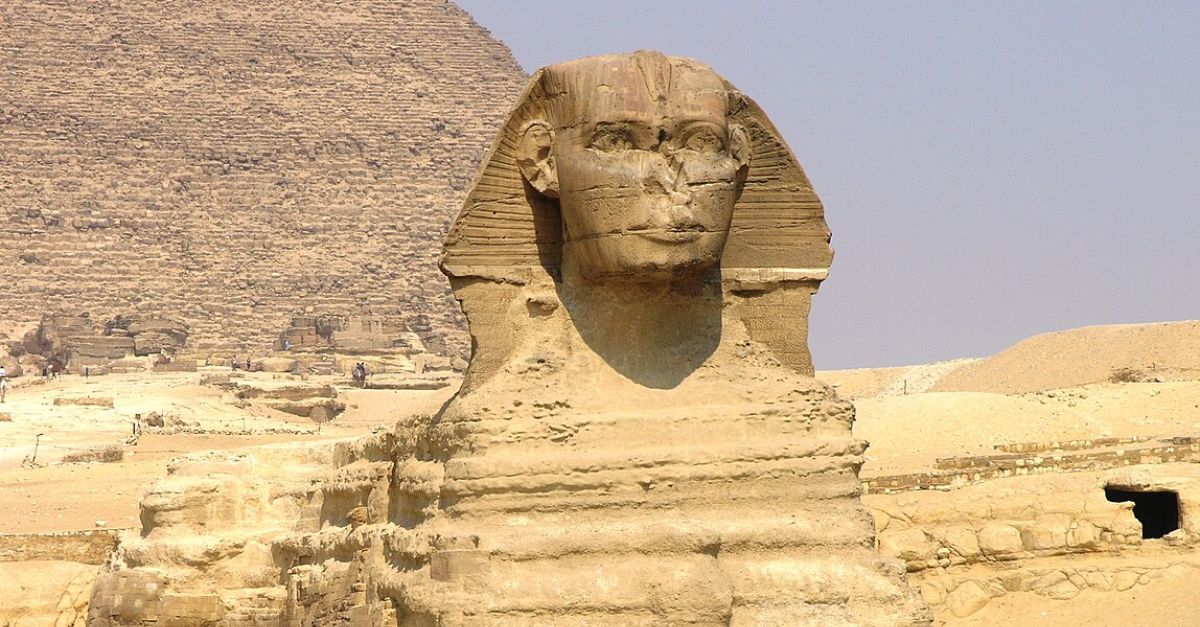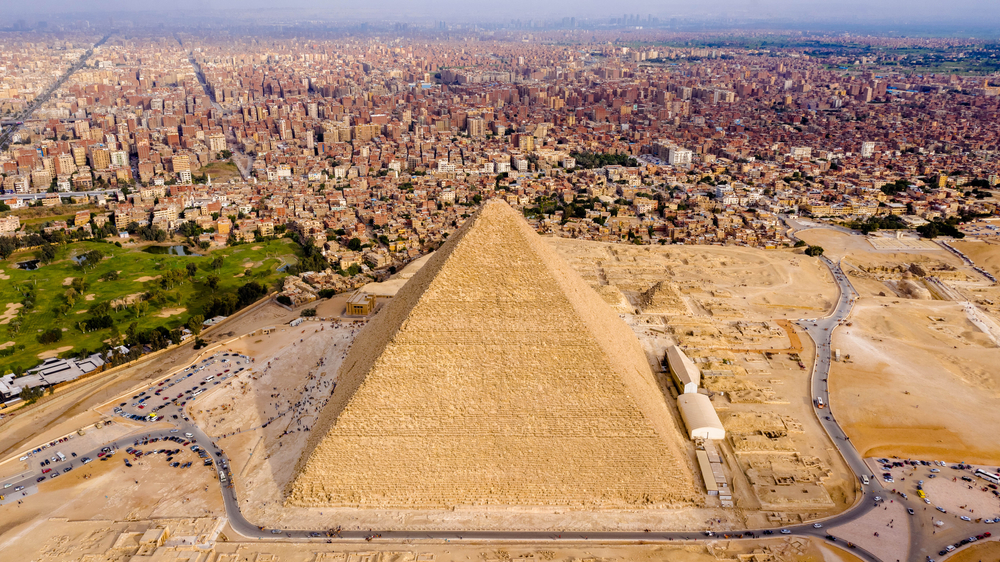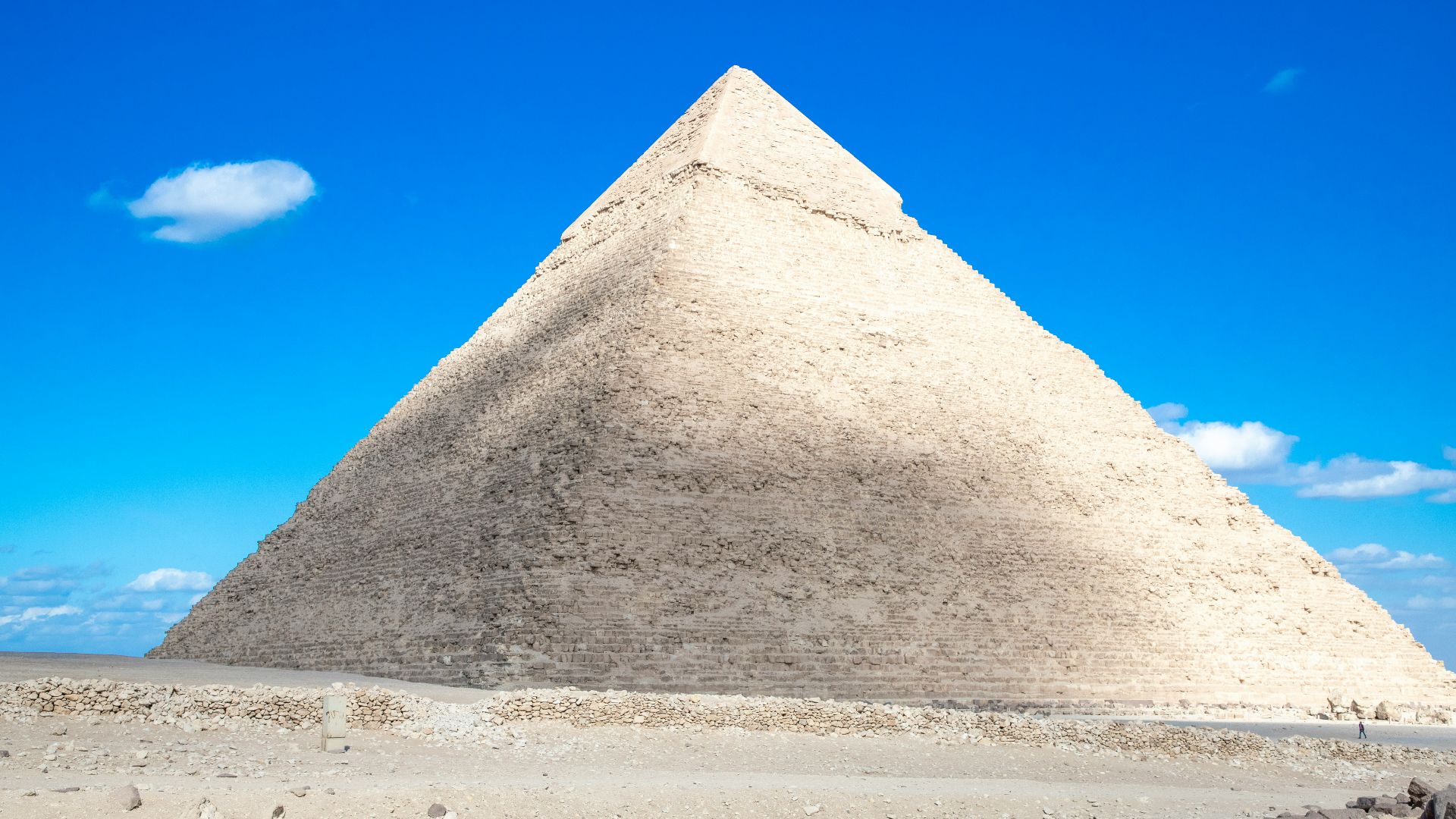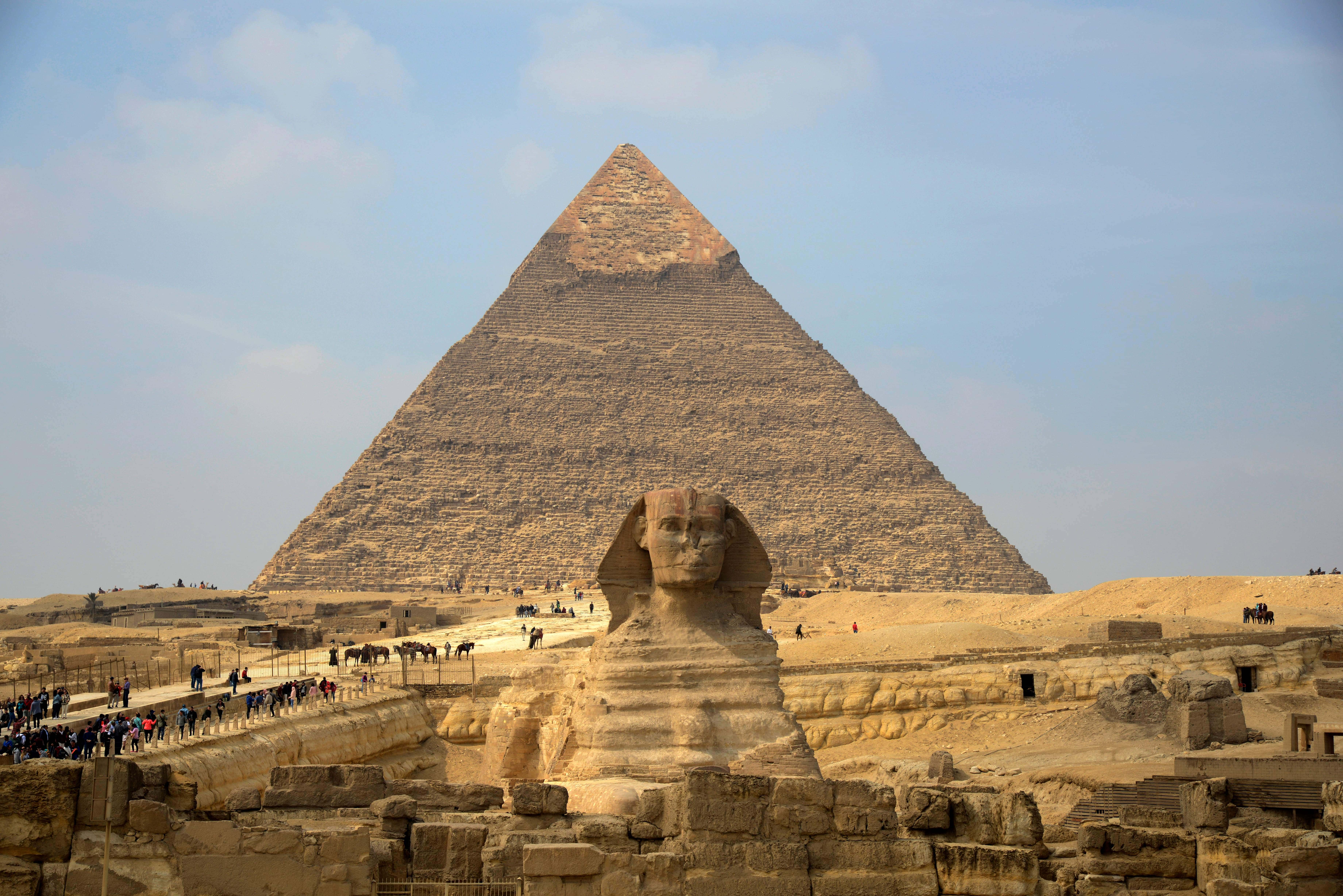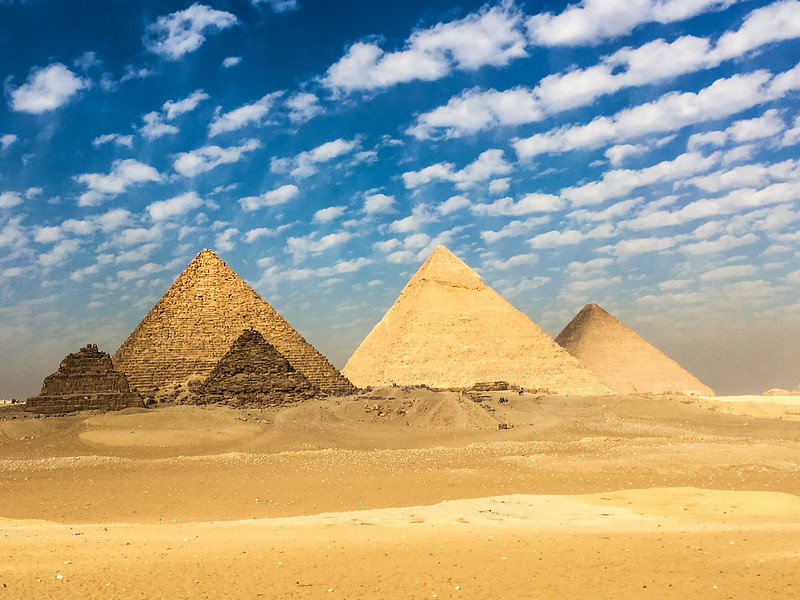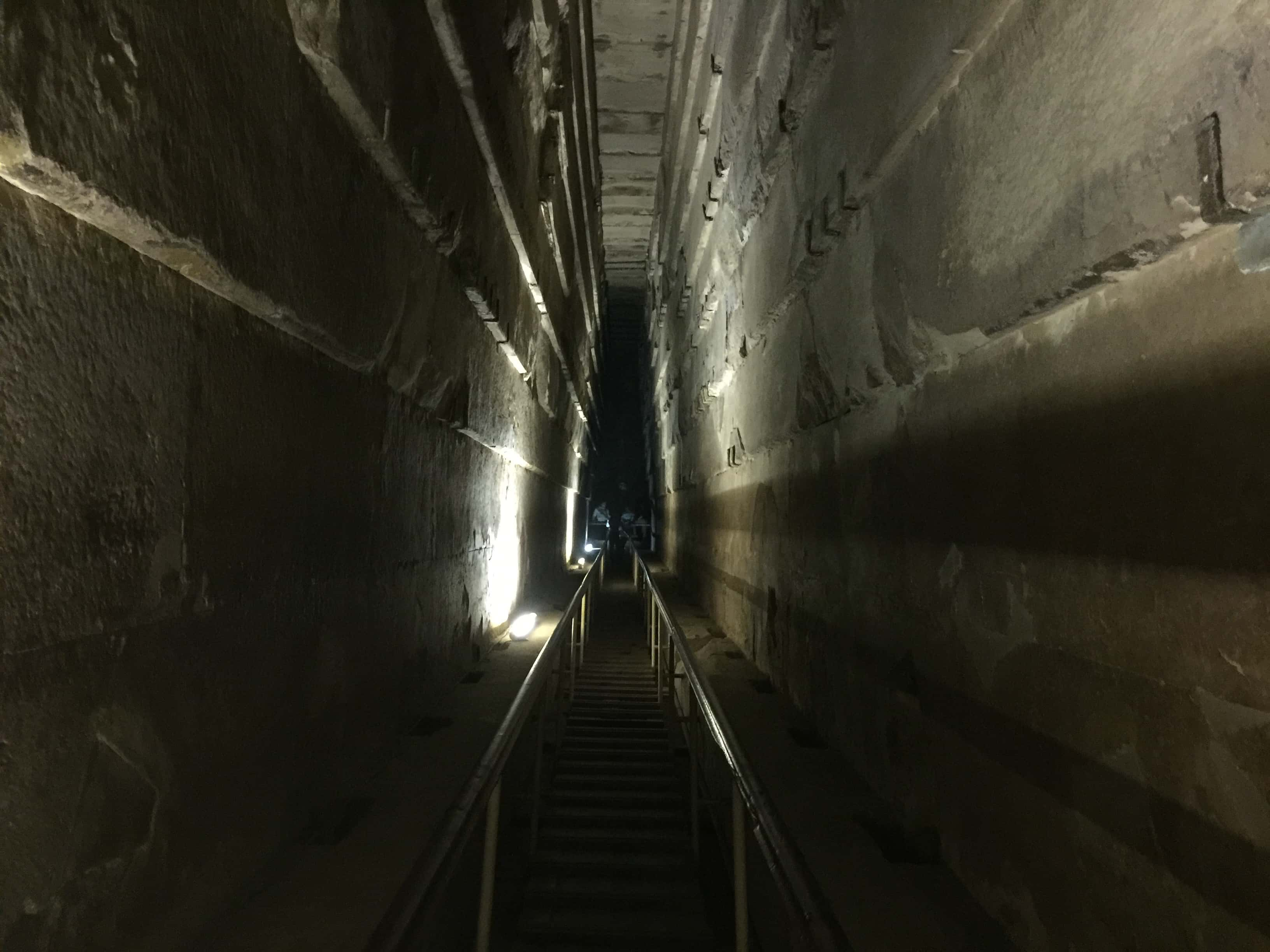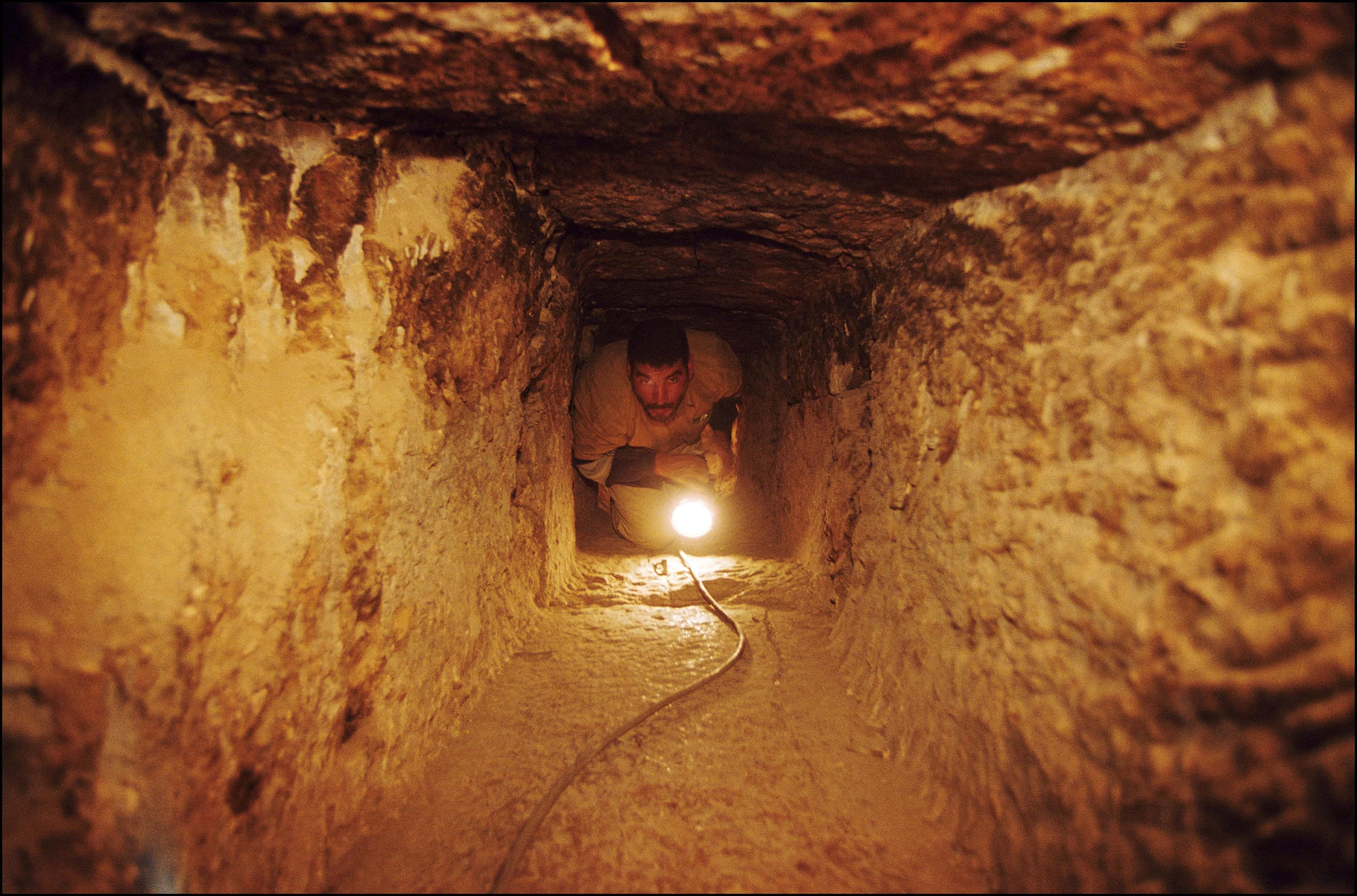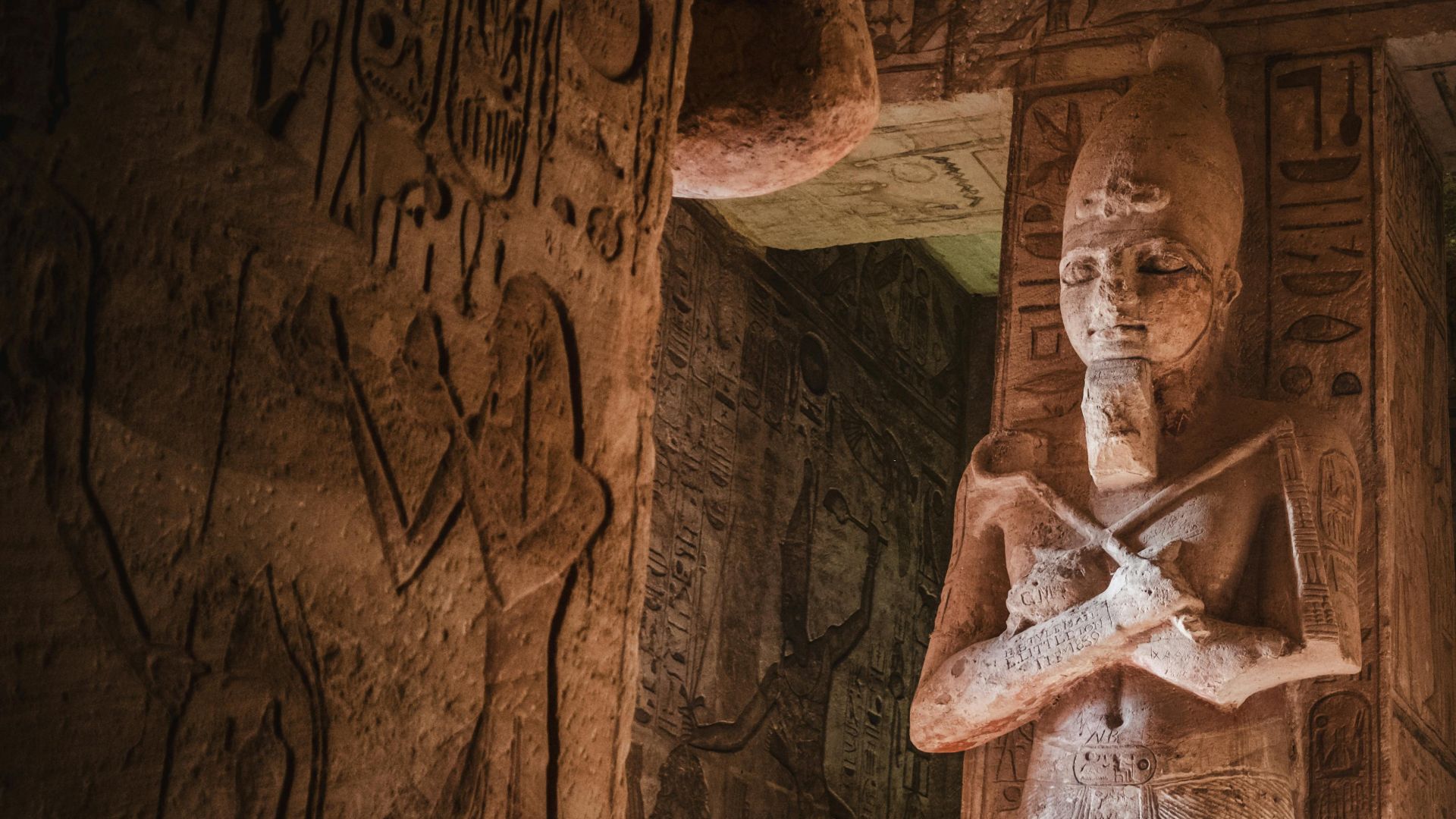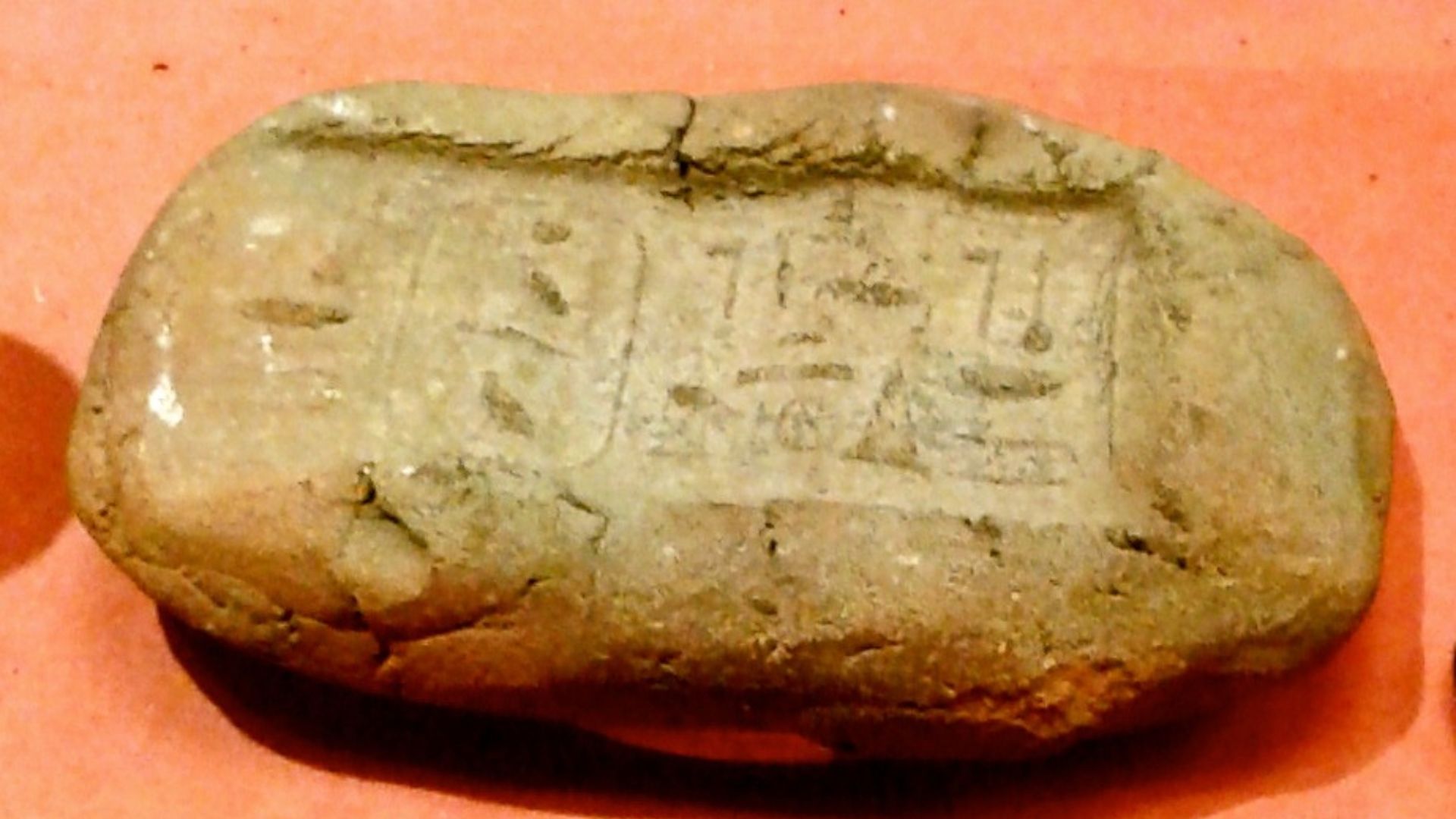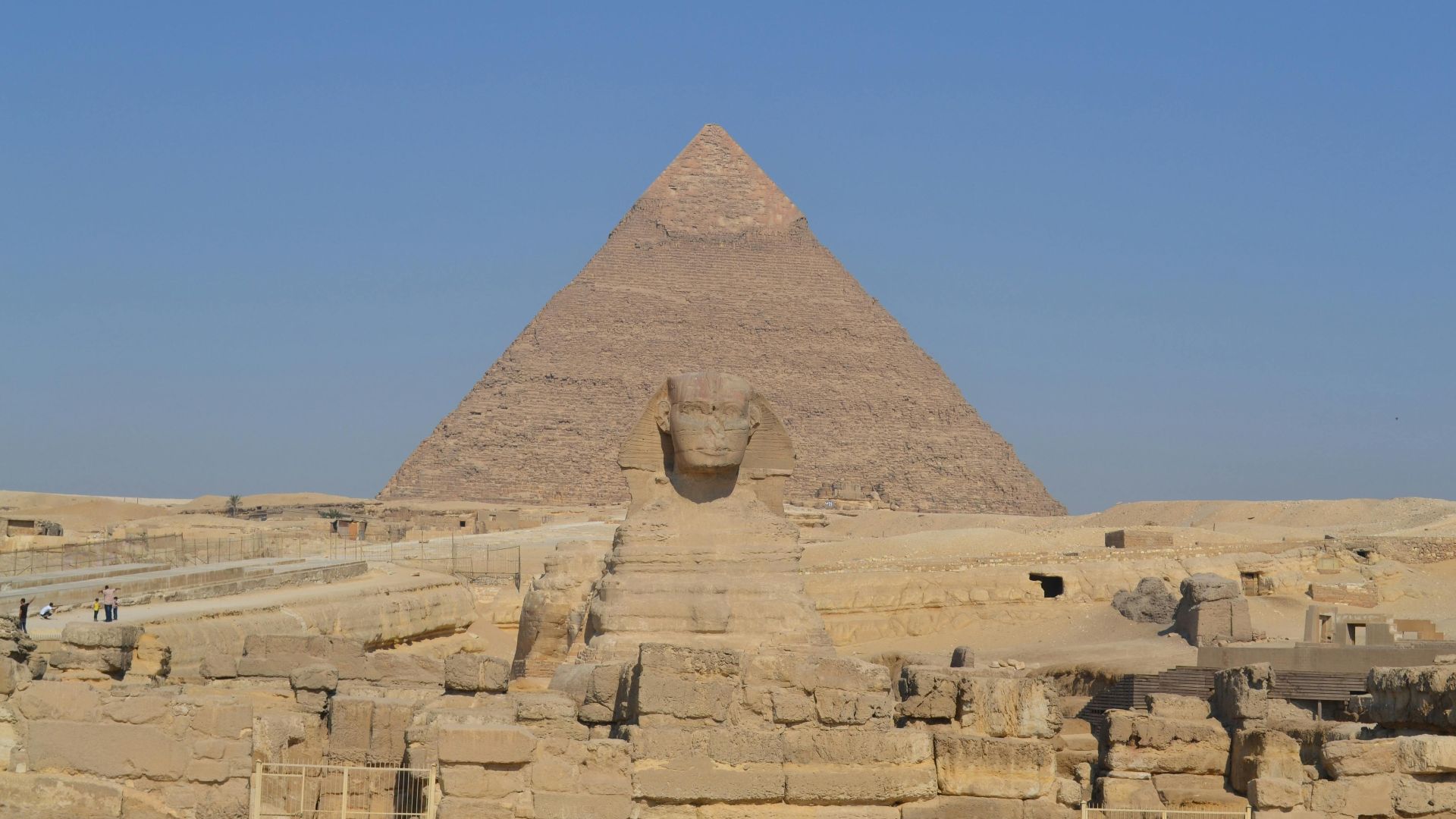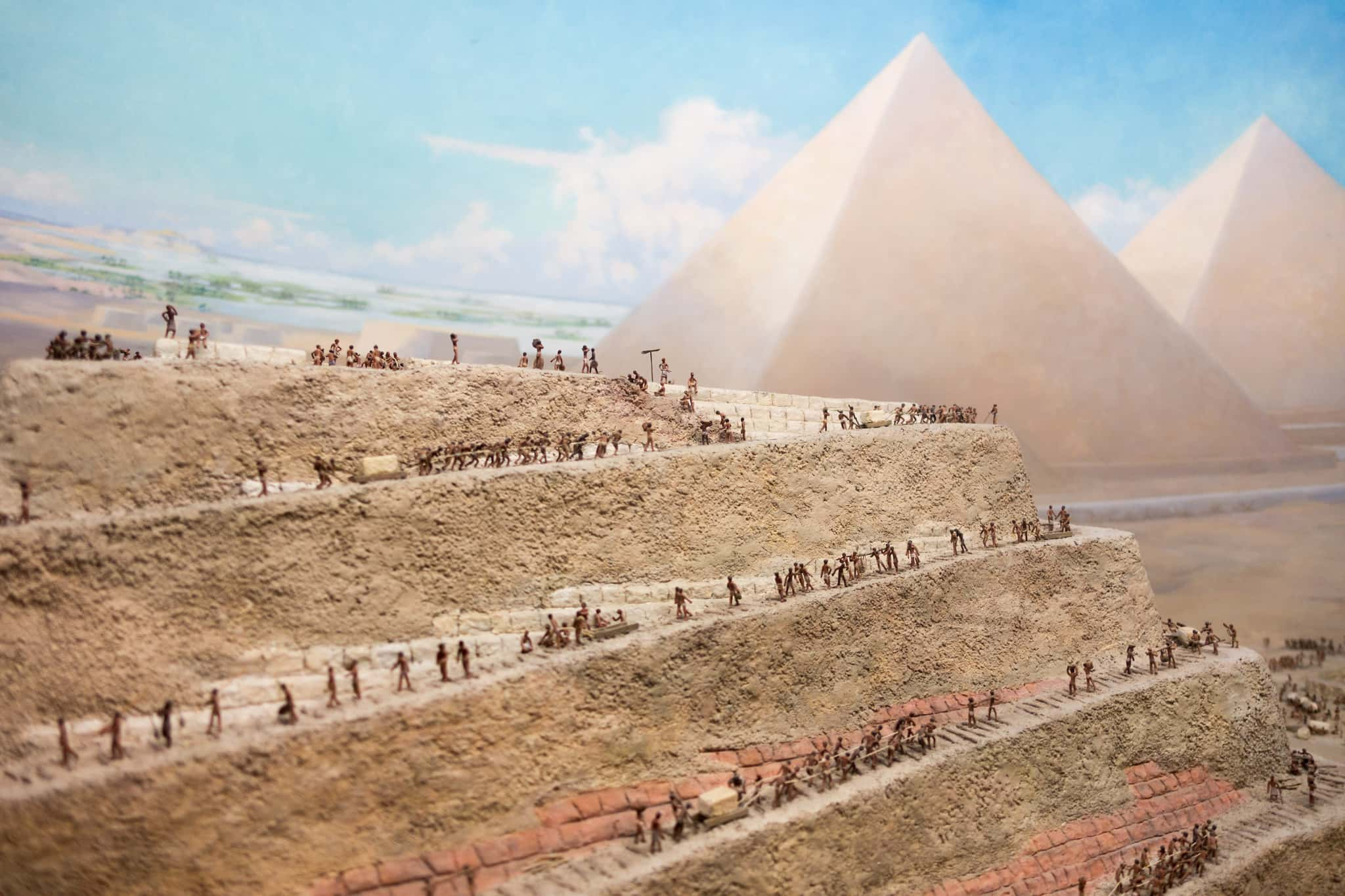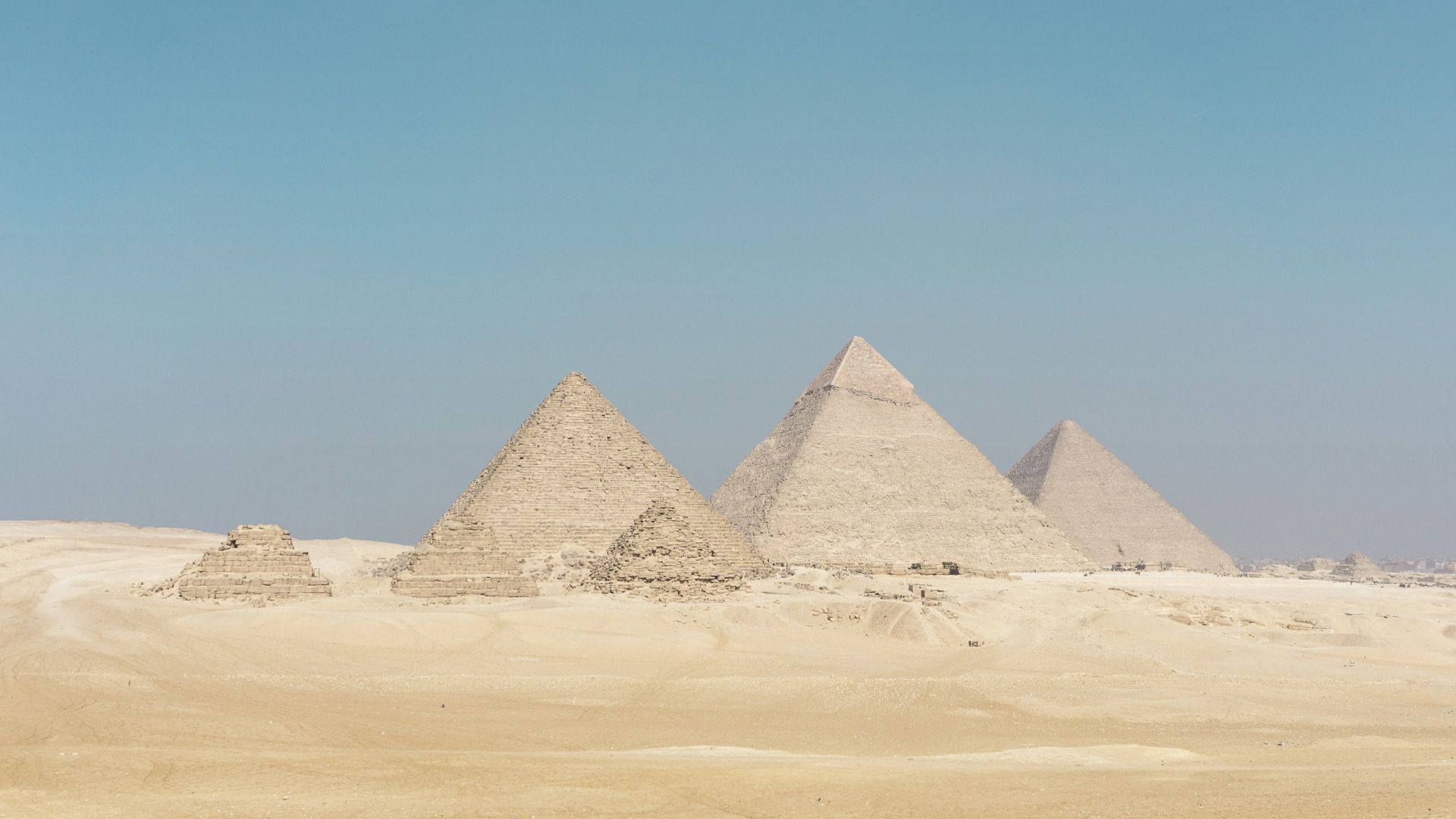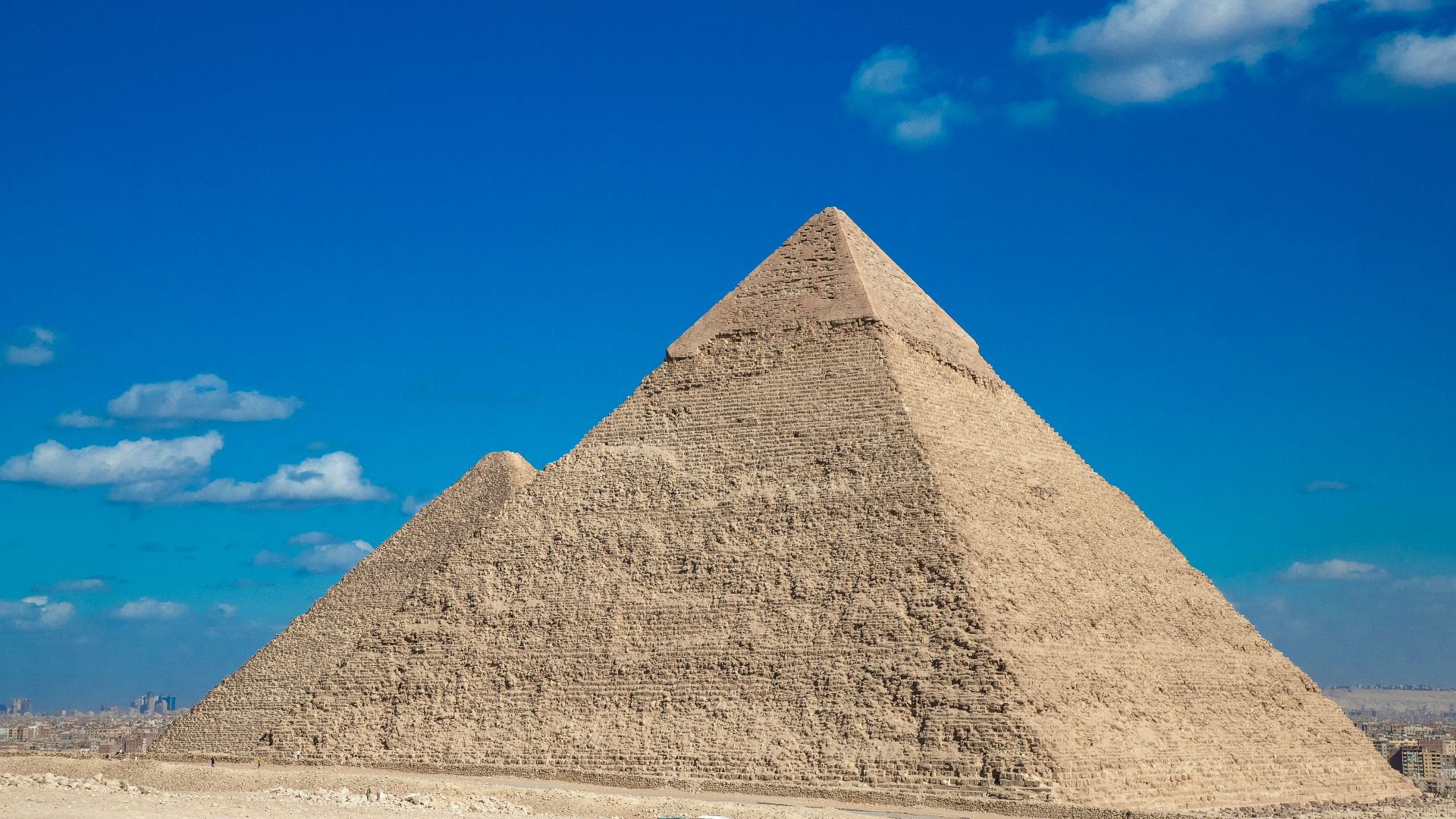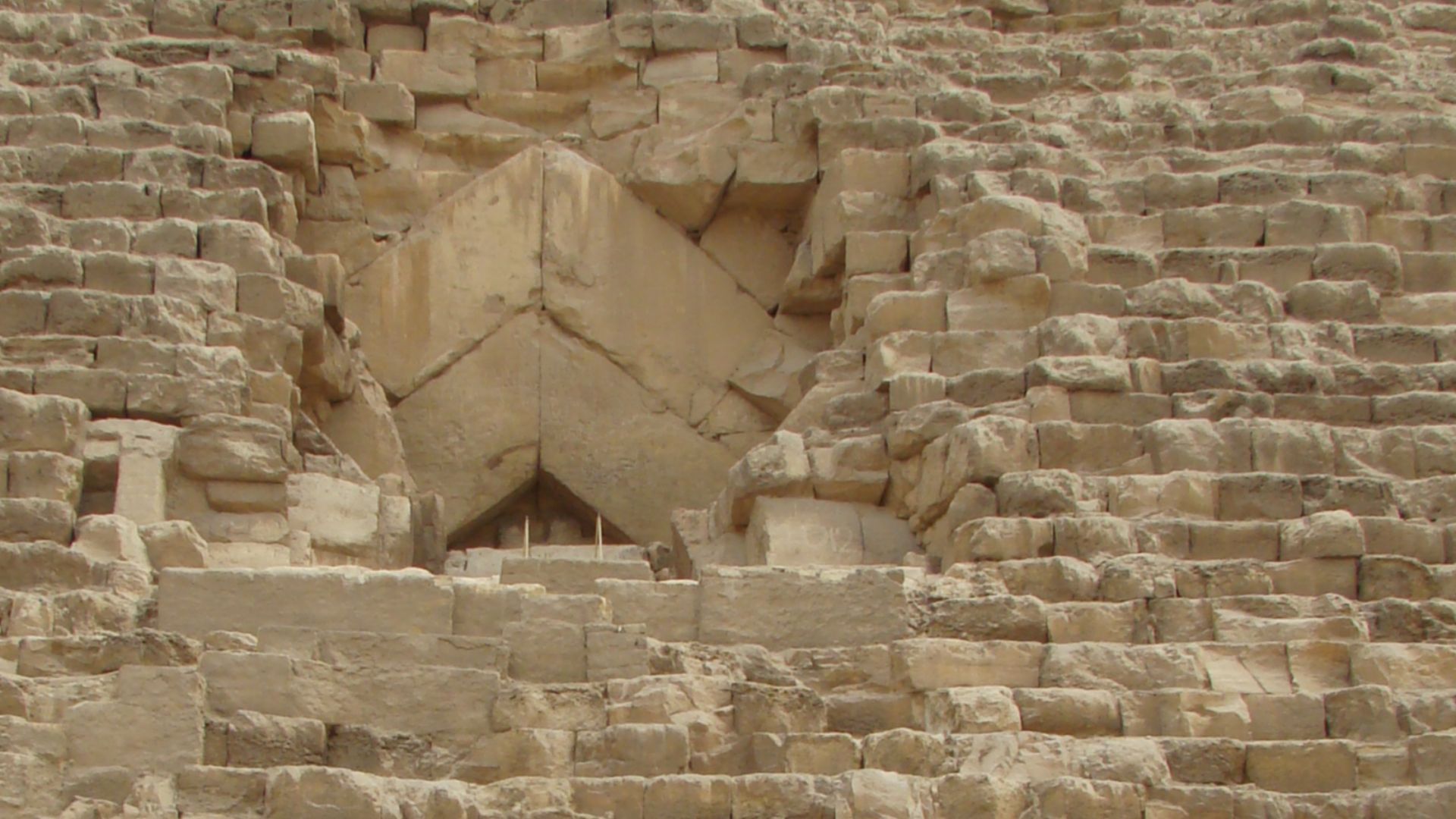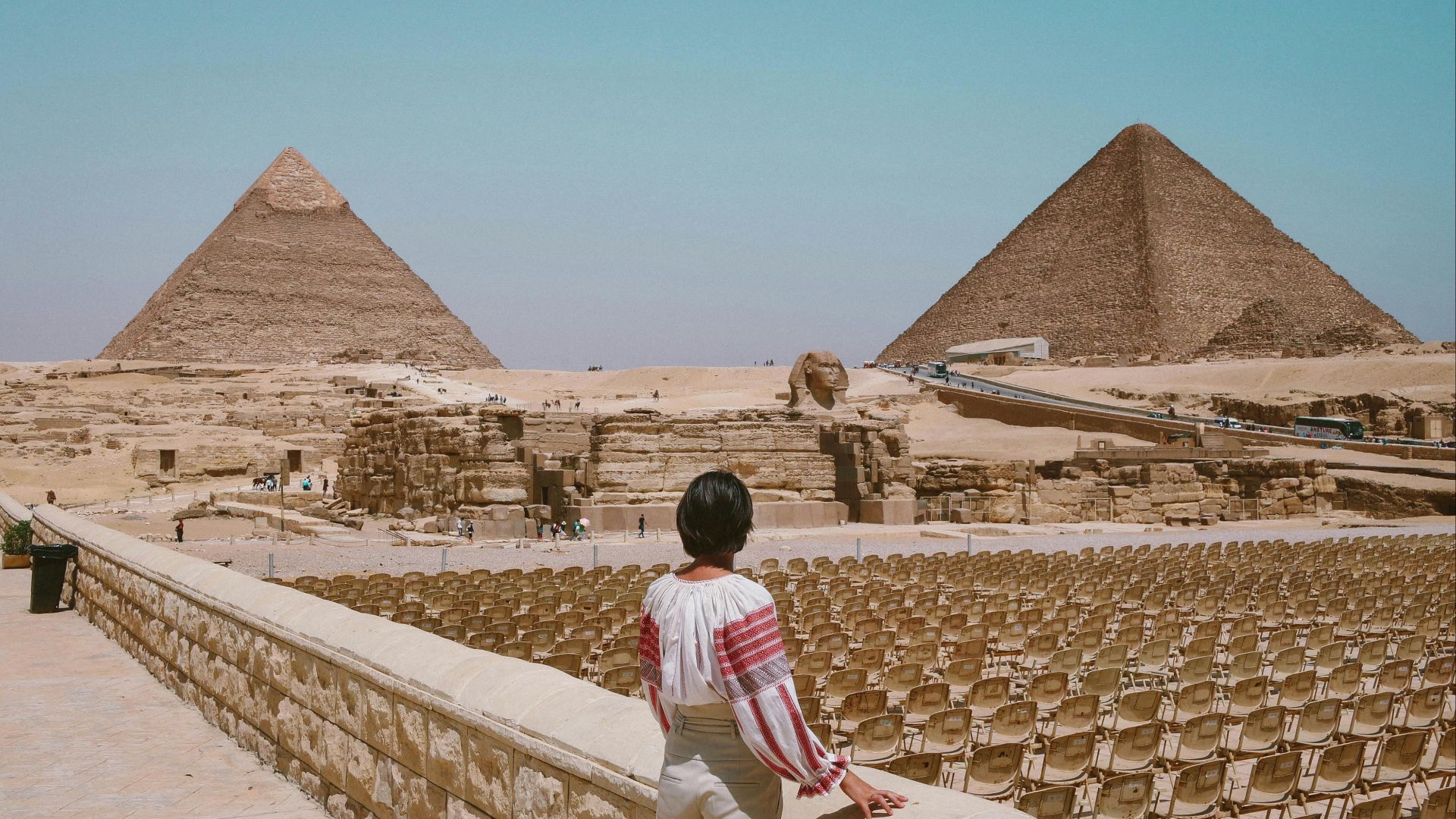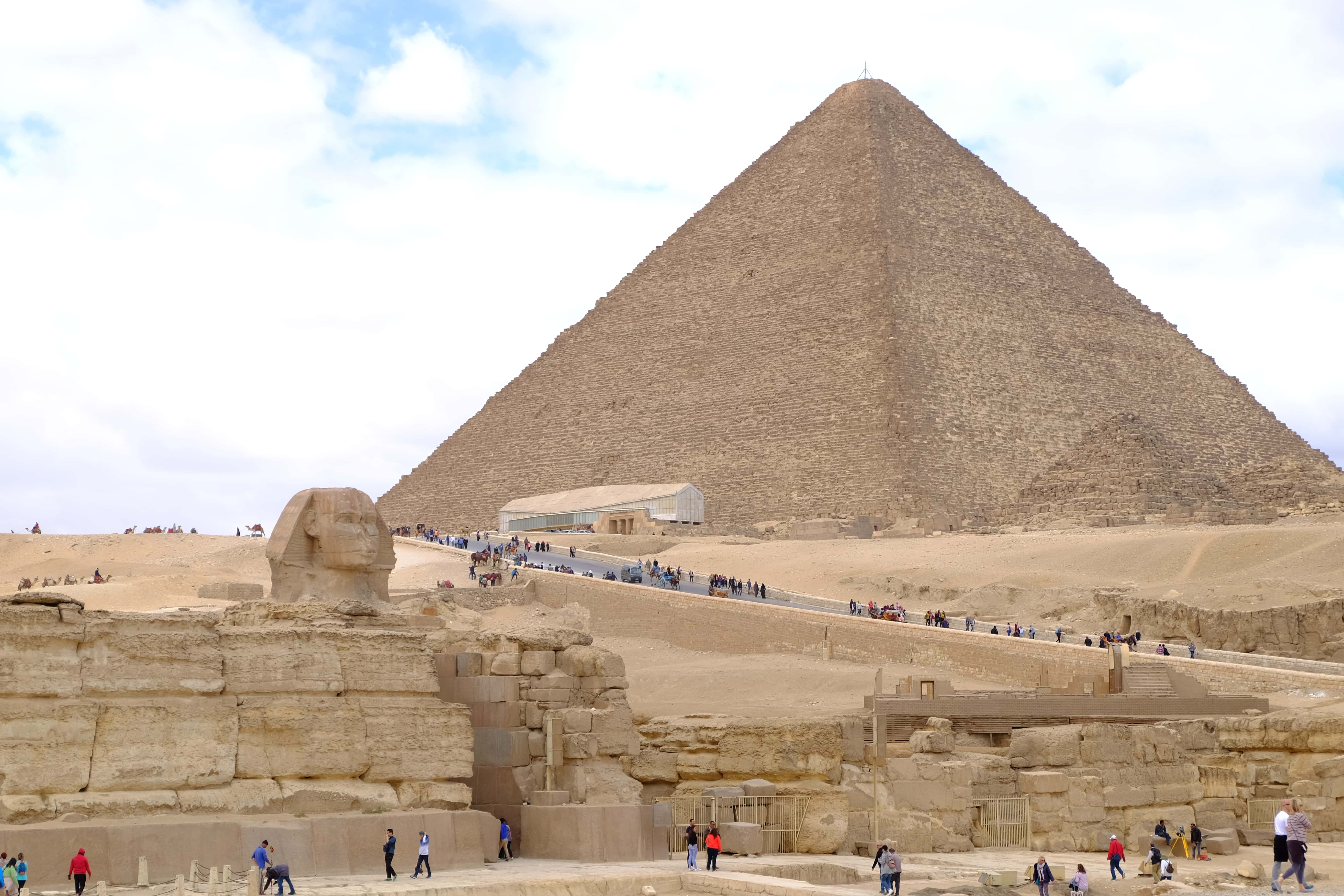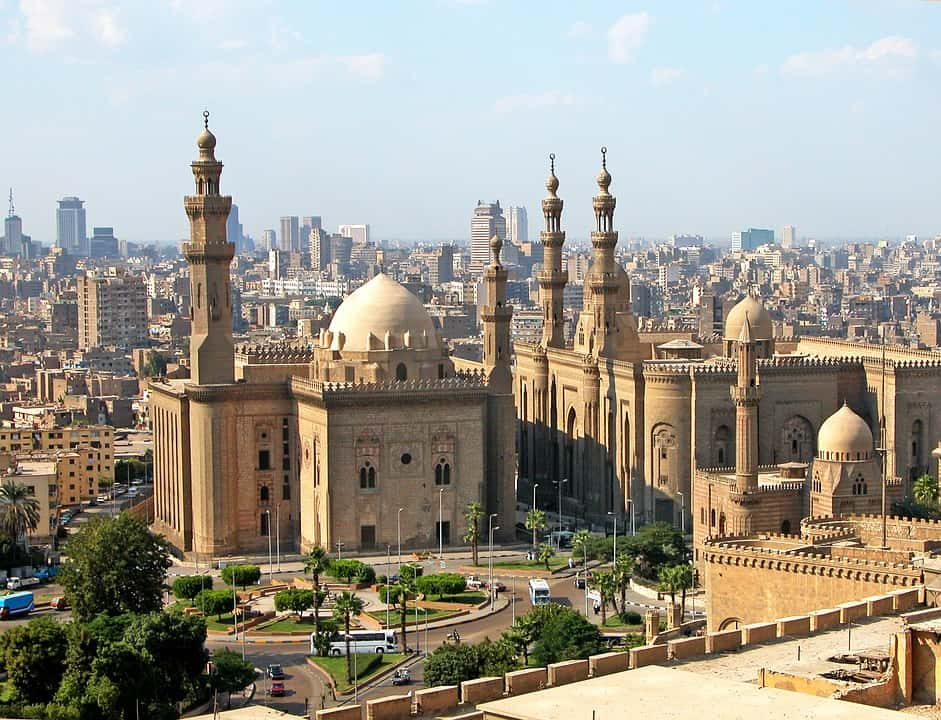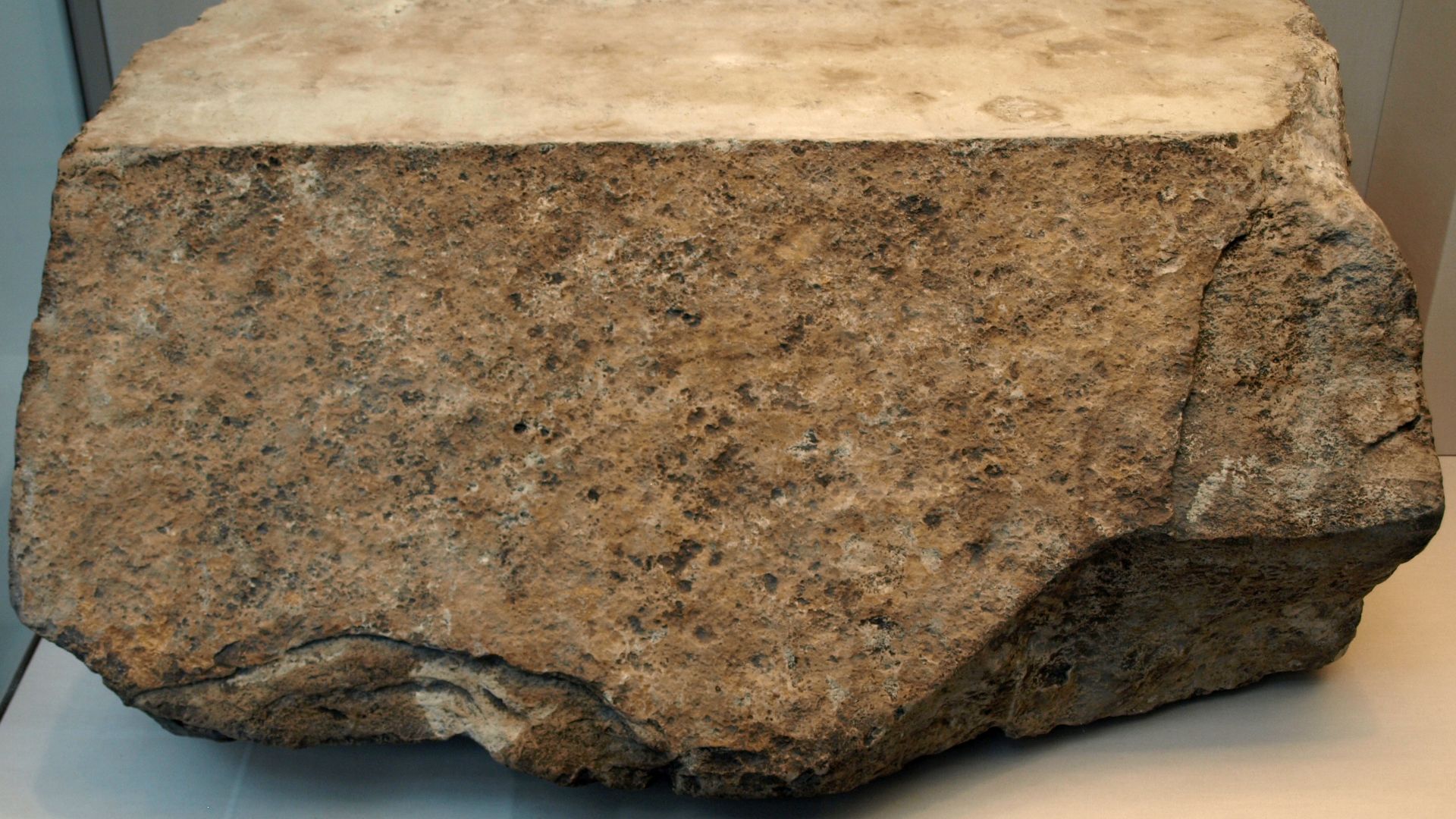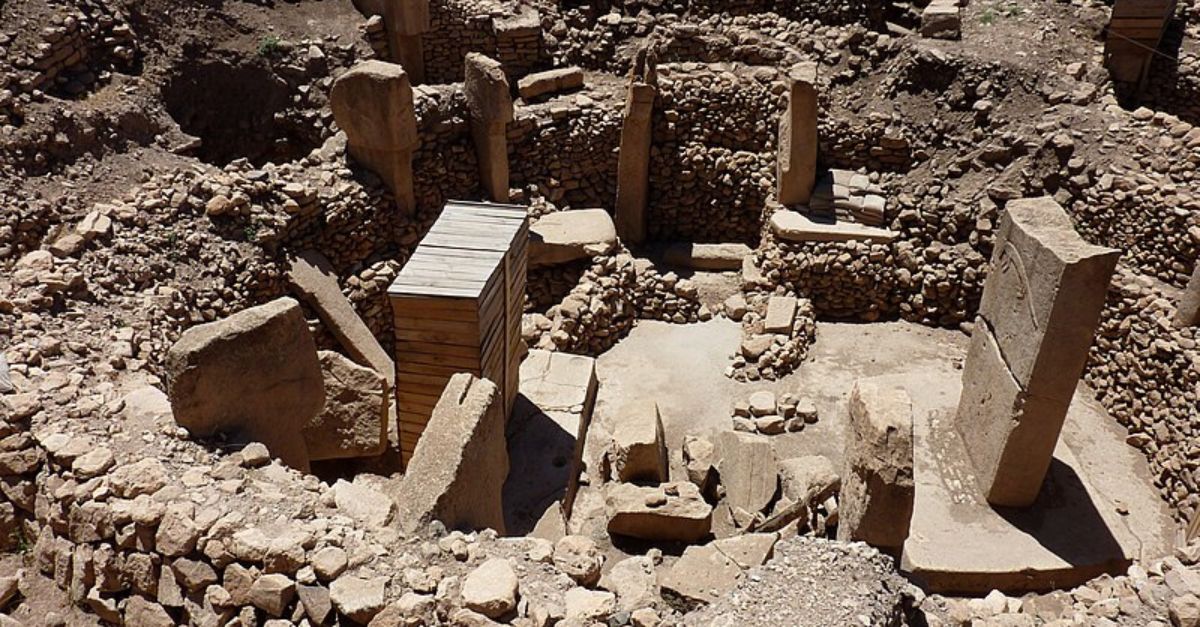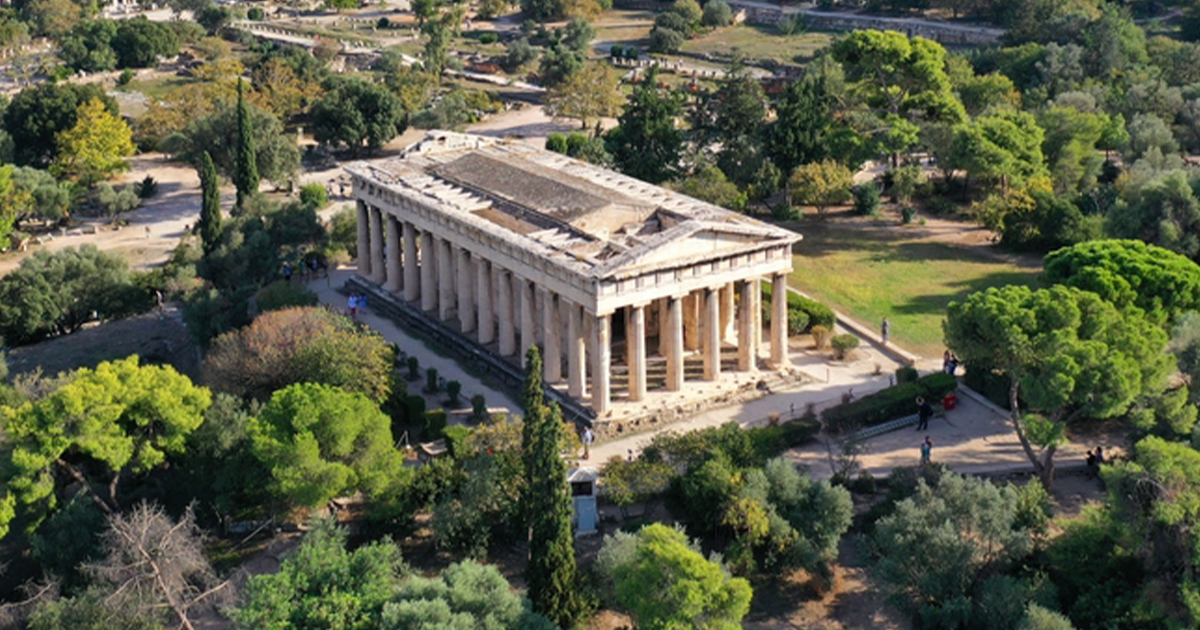All The Way To Egypt
You know the Great Pyramid—it's in nearly every history book. But behind those huge blocks lies a story packed with scientific secrets. What do air vents and starlight have in common? More than you think.
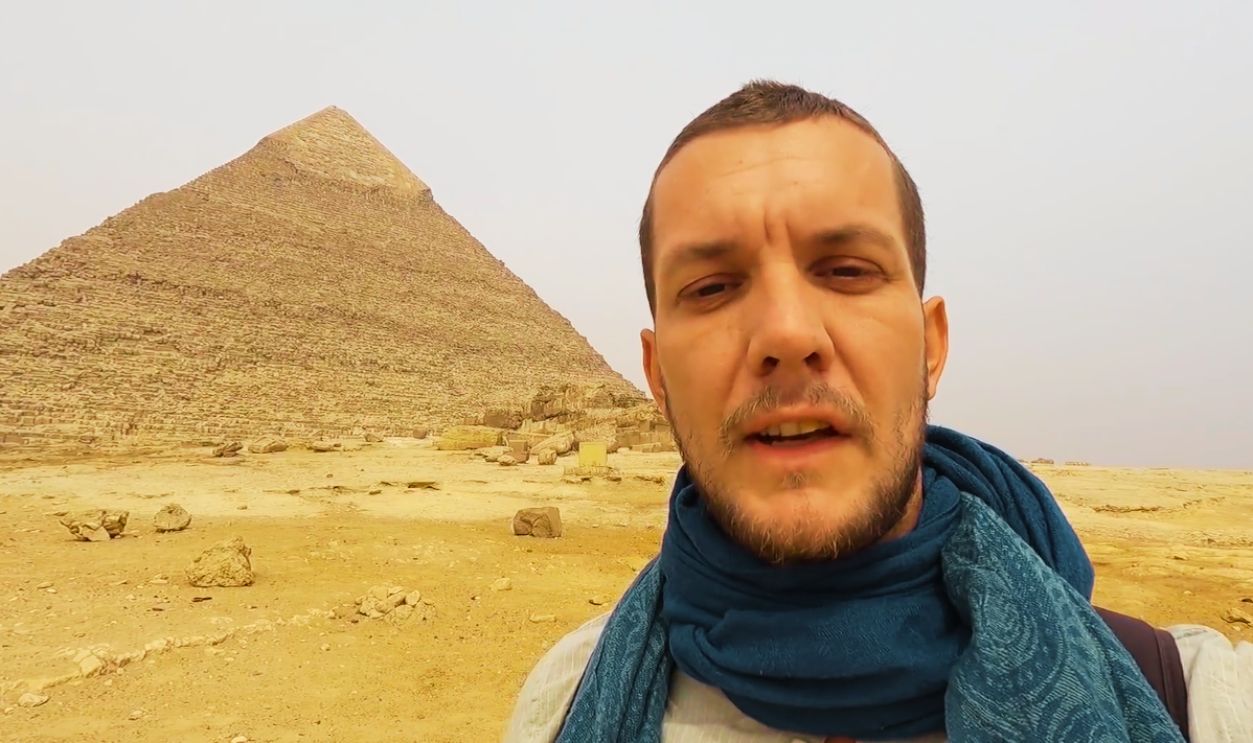
The Pyramid's Original Name Was "Akhet-Khufu”
The Ancient Egyptians didn't just toss names around. They called the Great Pyramid "Akhet-Khufu” or the Horizon of Khufu. It was a gateway where the King would rise again, framed by the sun. A powerful name for a monument meant to outlast time itself.
Over 2.3 Million Stone Blocks Make Up The Pyramid Of Giza
Hauling more than two million limestone and granite blocks wasn’t easy. Some are as heavy as multiple elephants, and they are stacked into a near-perfect triangle. That's what Ancient Egyptians did without cranes or forklifts. It must’ve been the ultimate endurance project.
 Douwe C. van der Zee, CC BY-SA 4.0, Wikimedia Commons
Douwe C. van der Zee, CC BY-SA 4.0, Wikimedia Commons
The Great Pyramid Was The Tallest Structure For More Than 3,800 Years
Long before skyscrapers scraped clouds, the Great Pyramid dominated the skyline. Towering at 481 feet, it held the world record for nearly four millennia. That's longer than the existence of the United States. How on earth did ancient builders outdo modern height champs?
 Noureddin Abdulbari, CC BY-SA 4.0, Wikimedia Commons
Noureddin Abdulbari, CC BY-SA 4.0, Wikimedia Commons
Its Orientation To True North Is Freakishly Precise
Built thousands of years ago with no magnetic compasses, the Great Pyramid still points to true north with shocking accuracy, about 3.6 arc minutes off to hit a cosmic bullseye. It's so precise that some engineers today are still debating how they pulled it off without lasers or satellites.
Builders Drank Over Ten Pints Of Beer Every Single Day
Beer was a staple in Ancient Egypt. Laborers who built the Great Pyramid received more than ten pints daily as part of their wages. It hydrated and kept spirits high. Moreover, it was an important source of nutrition.
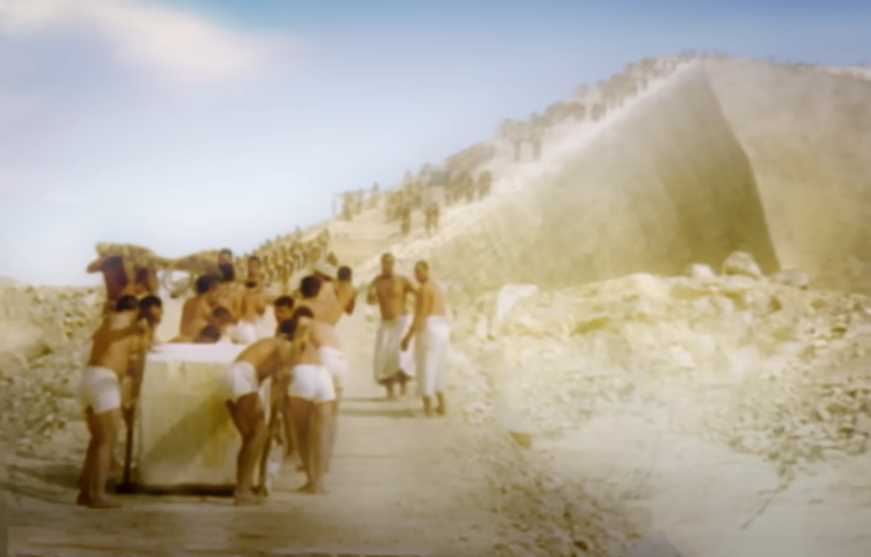 PBS, NOVA, Decoding the Great Pyramid (2019)
PBS, NOVA, Decoding the Great Pyramid (2019)
The Internal Temperature Never Budges From 68 Degrees Fahrenheit
Whether the desert is blazing or breezy, the pyramid's interior keeps a cool 68°F. No air conditioner. No solar panels. Just tons of stone working together to regulate the temperature. The Ancient Egyptians knew how to build a structure that doubles as the world's most solid climate bubble.
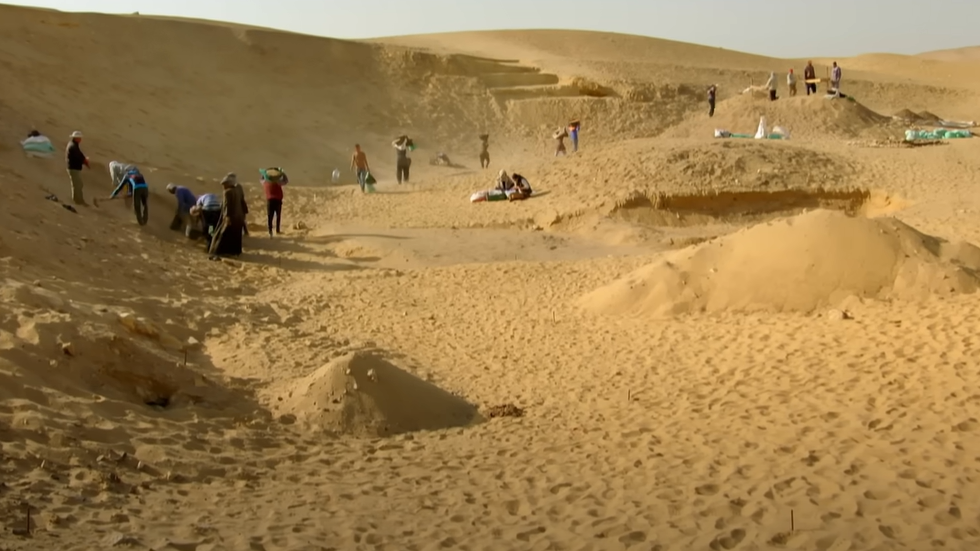 PBS, NOVA, Decoding the Great Pyramid (2019)
PBS, NOVA, Decoding the Great Pyramid (2019)
The Original Surface Was Made Of Polished Limestone
Back in its prime, this structure wasn't rough and sandy. It was smooth and white. Polished limestone casing stones reflected sunlight so brilliantly that the structure probably glowed. You would squint at it when seen from miles away. It was ancient Egypt's ultimate show-off.
The Base Is Almost Mathematically Perfect
Each side of the pyramid's base measures a little over 755 feet. Yet they're nearly identical in length, off by less than two inches. A precision like this on a 13-acre base is jaw-dropping, especially because these people lacked the necessary tools.
It's The Only One Of The Seven Wonders Still Standing
Six of the Seven Wonders of the “Ancient” World crumbled into ruins or disappeared entirely. But the Great Pyramid is still hanging out in the sand. The construction technique made it earthquake-resistant and it basically defies time.
The Grand Gallery Features One-Of-A-Kind Corbelled Architecture
As you step into the Grand Gallery, you’ll see one of the most unique corridors in ancient history. The walls stack upward in a corbelled design to create a soaring, sloped tunnel, unlike any other Egyptian pyramids. It's so advanced that it's still influencing modern architectural ideas thousands of years later.
Its Foundation Was Leveled With Remarkable Accuracy
Before stacking millions of stones, ancient builders leveled the foundation so precisely that it only varies by about an inch across the entire base. That's over 13 acres of flatness. Raw skill and know-how did the magic without bulldozers.
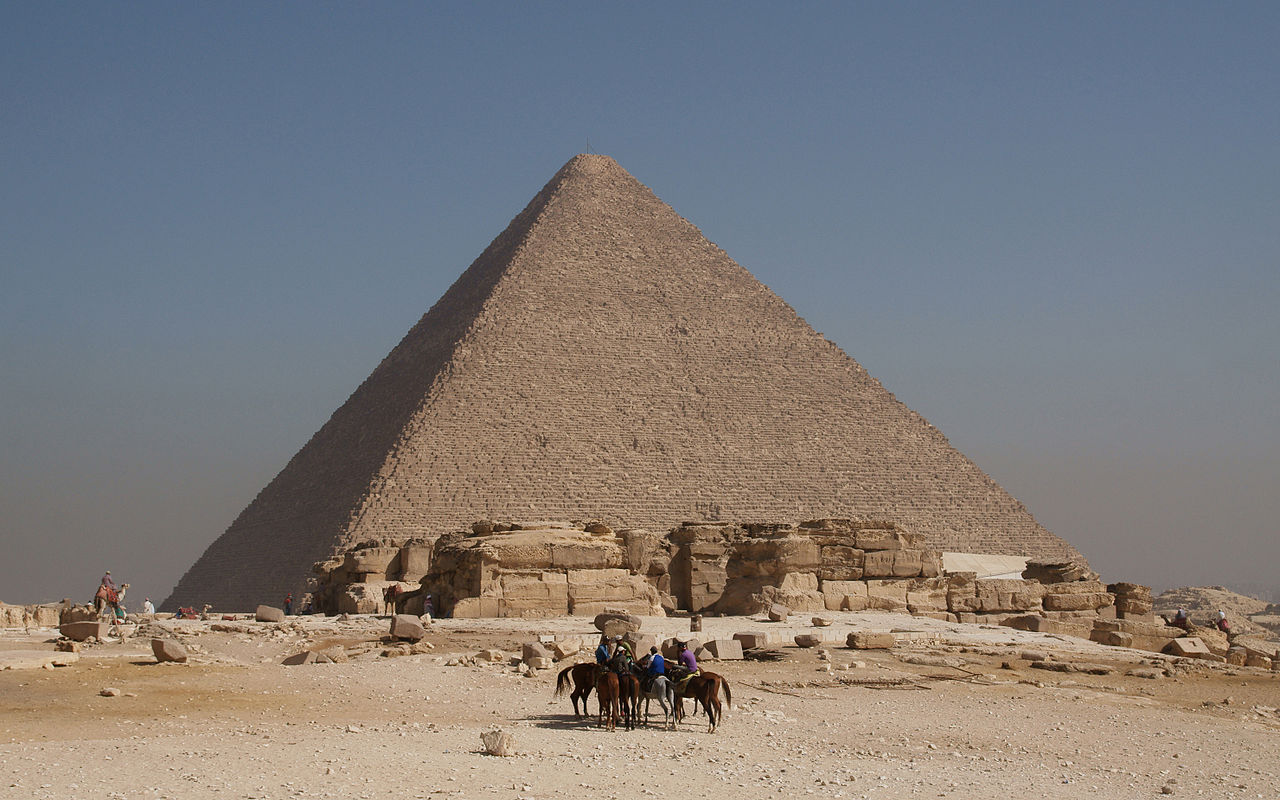 kallerna, CC BY-SA 3.0, Wikimedia Commons
kallerna, CC BY-SA 3.0, Wikimedia Commons
The Diary Of Merer Is The Oldest Papyri Ever Discovered
Written about 4,500 years ago, the Diary of Merer gives us a front-row seat to pyramid construction, especially the final phase. Merer was an inspector who ferried limestone by boat. His papyrus records show organized logistics and debunk myths. Workers might have faced pressures, but they weren’t enslaved.
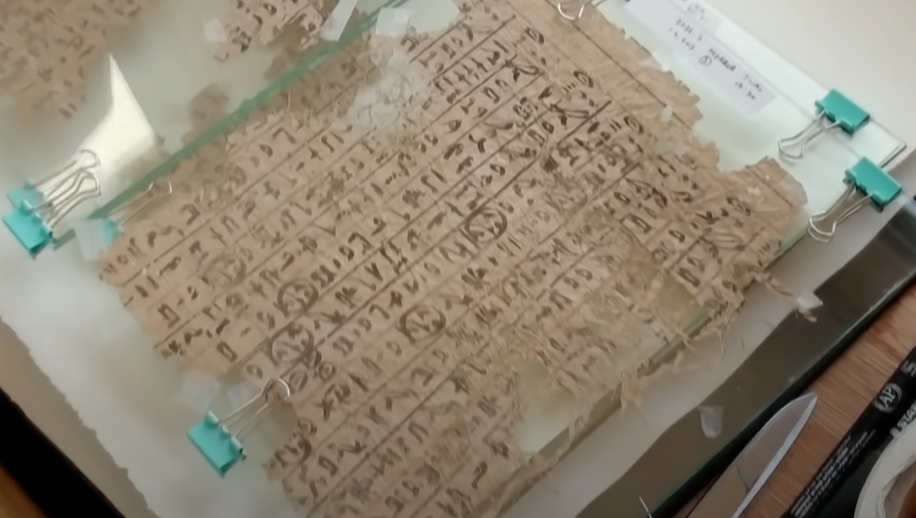 PBS, NOVA, Decoding the Great Pyramid (2019)
PBS, NOVA, Decoding the Great Pyramid (2019)
Roman Tourists Visited The Pyramids Thousands Of Years Ago
By the time Ancient Rome rolled around, the pyramids were already ancient and iconic. Roman tourists carved graffiti into the stones as they admired the grandeur of the Giza Plateau. Evidence shows that even 2,000 years ago, people couldn't resist taking a tour.
 Morhaf Kamal Aljanee, CC BY-SA 3.0, Wikimedia Commons
Morhaf Kamal Aljanee, CC BY-SA 3.0, Wikimedia Commons
The King's Chamber Was Built Using Granite From 500 Miles Away
Those massive red granite blocks above the King's Chamber weren't local. They came from Aswan, nearly 500 miles to the south. Each slab weighs up to 80 tons, yet they were transported without wheels or engines. Moving that much rock by manpower must have been challenging.
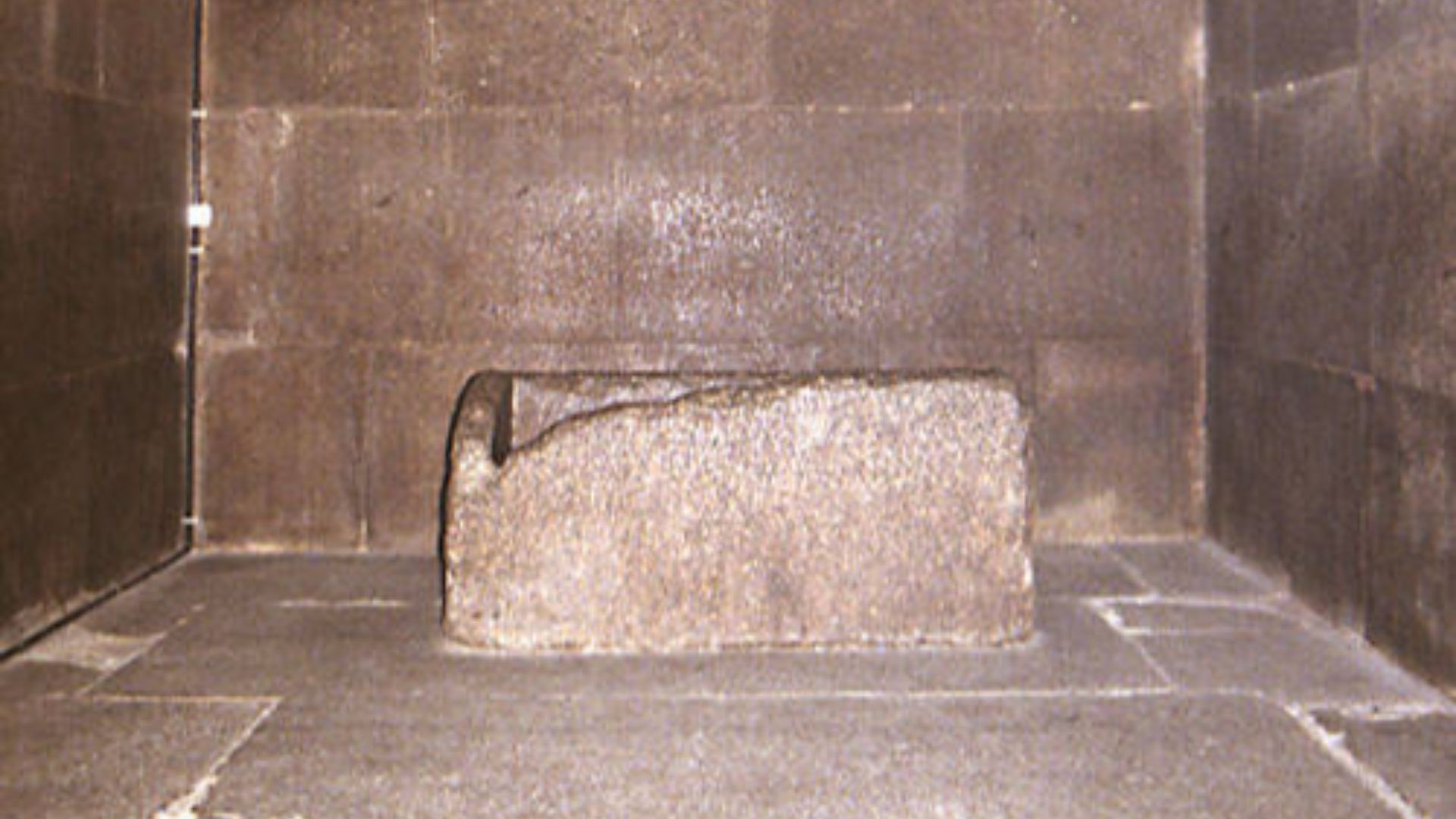 Jon Bodsworth, Wikimedia Commons
Jon Bodsworth, Wikimedia Commons
The Shaft Alignments May Point To Orion And Sirius
Two mysterious shafts in the Great Pyramid don't lead outside. They actually aim at the stars. Scholars believe they targeted Orion's Belt and Sirius around 2500 BCE. Whether for the King's soul or something more astronomical, the alignment is spooky-precise.
Ancient Workers Left Graffiti Deep Inside
In hidden chambers above the King's Chamber, archaeologists found red-ink graffiti written by pyramid builders. These were crews signing their names and shouting out Khufu, not royal inscriptions that can be found in other structures built by the same people.
The Stones Were Likely Hauled Using Water And Sleds
A painting found in an ancient tomb shows workers pouring water in front of sleds to reduce friction. Modern physics confirms this trick could work. It turns out, Ancient Egyptians may have invented a low-tech life hack for hauling multi-ton blocks, which was simple yet brilliant.
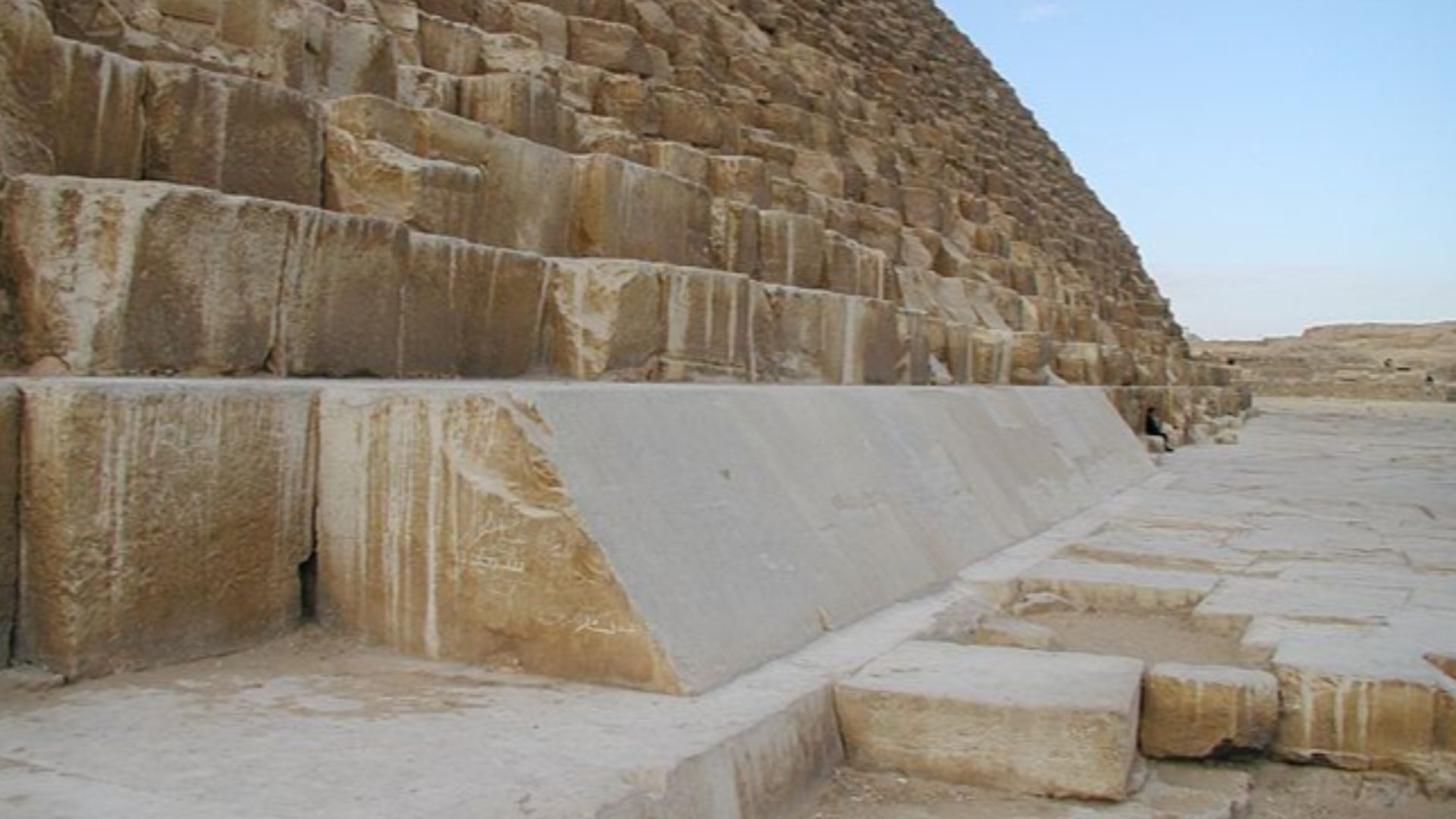 Jon Bodsworth, Wikimedia Commons
Jon Bodsworth, Wikimedia Commons
Its Outer Casing Was Quarried From Across The River
The smooth limestone that once covered the pyramid didn't come from far away. It was mined from Tura across the Nile. Workers ferried the polished stones over and placed them with uncanny precision. With the absence of modern equipment, it’s hard to imagine how they did it.
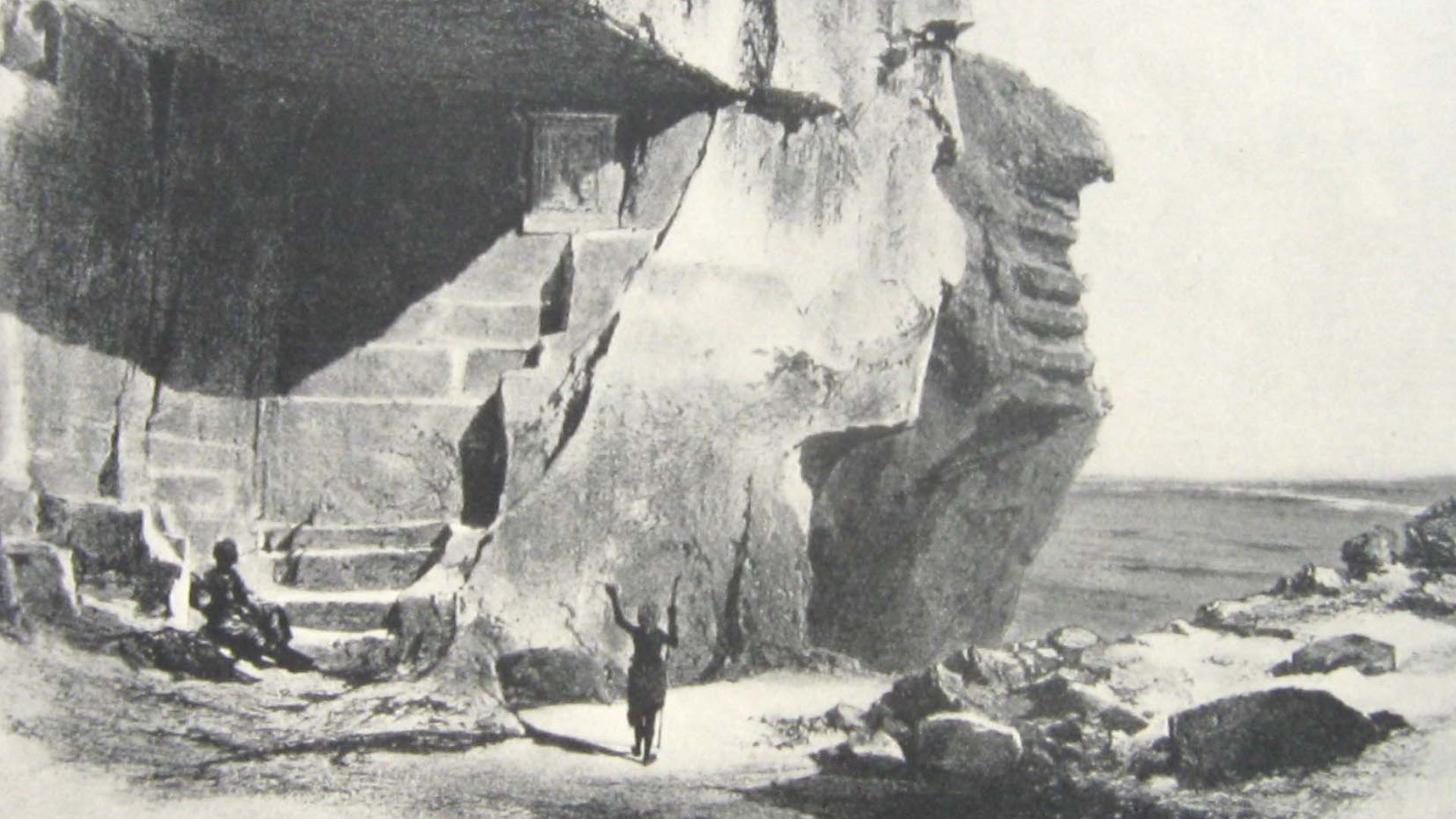 Karl Richard Lepsius, Wikimedia Commons
Karl Richard Lepsius, Wikimedia Commons
Five Stacked Relief Chambers Protect The King's Chamber Ceiling
Above the King's Chamber are five hidden granite "relieving" chambers designed to redirect pressure from the blocks above. Without them, the ceiling would've collapsed ages ago. Ancient Egyptians engineered load dispersion before the term existed.
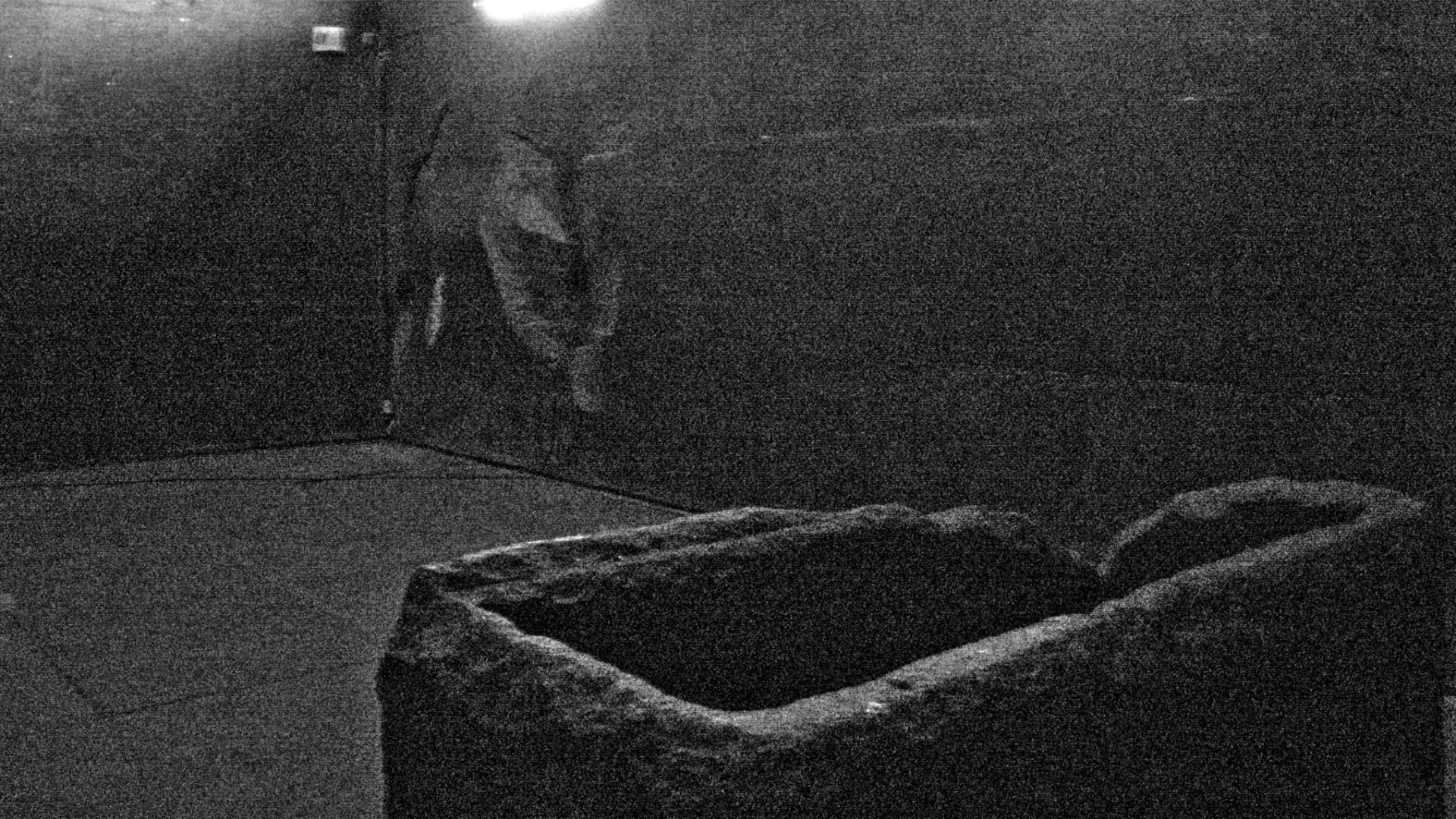 Andrew Currie, Wikimedia Commons
Andrew Currie, Wikimedia Commons
The Interior Holds No Mummy Or Treasures
Despite Hollywood hype, no mummy or golden loot has ever been found inside the Great Pyramid. It was likely looted long ago—or maybe it never held treasures to begin with. The enigma adds to its legend by turning an empty stone tomb into the most famous "what if" in archaeology.
One Internal Passage Is Sealed With Massive Granite Plugs
Early explorers hit a literal wall inside the pyramid: a sloped passage blocked by huge granite stones. These plugs were deliberately dropped into place to stop tomb raiders. It's an ancient booby trap, minus the spike pits, which was practical and probably frustrating for every intruder.
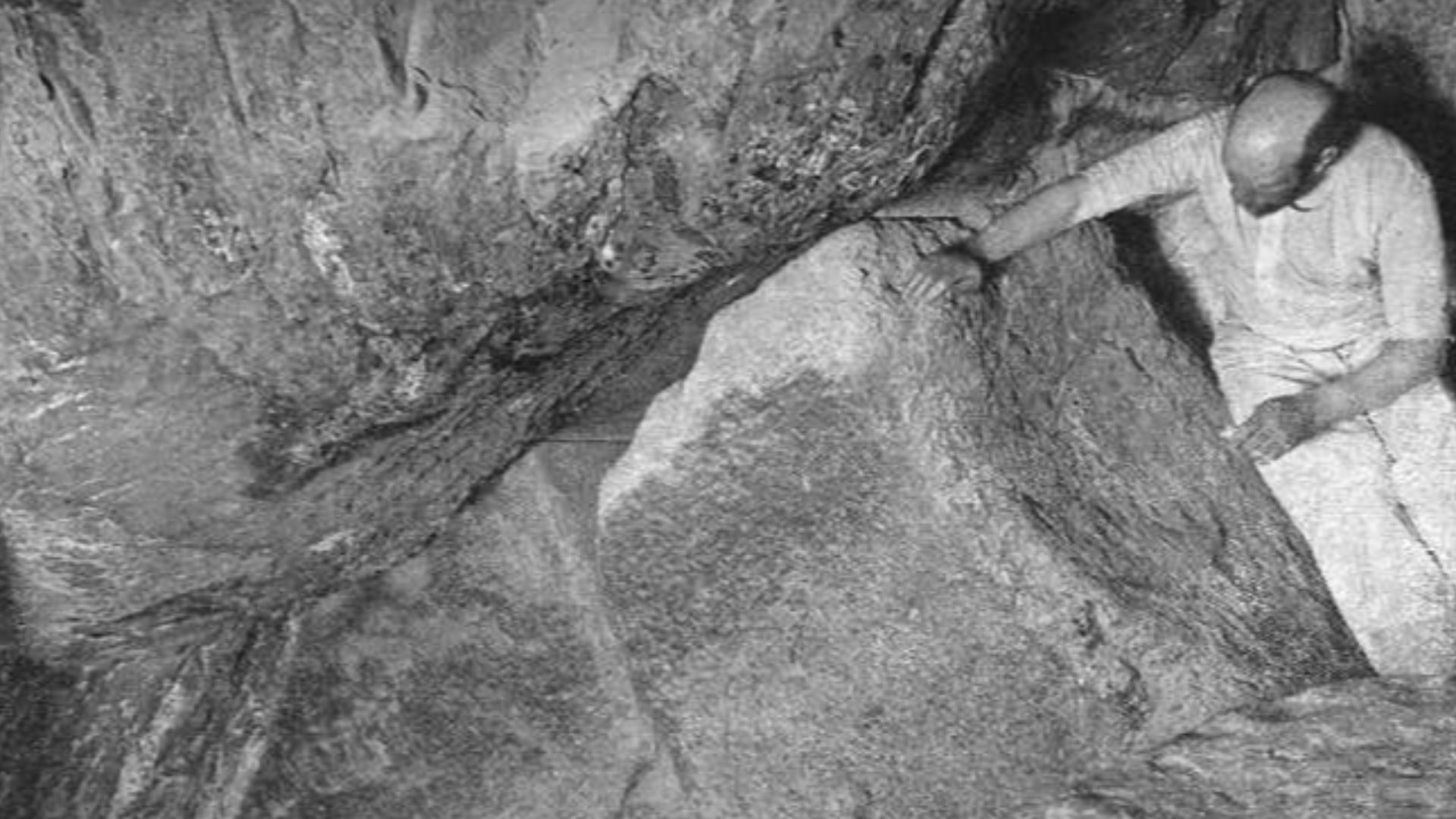 john and edgar morton, Wikimedia Commons
john and edgar morton, Wikimedia Commons
A Hidden Void The Size Of A Jetliner Was Discovered In 2017
Using cosmic-ray scanning, scientists found a mysterious 100-foot-long void above the Grand Gallery. No one knows what it's for, as there's no entrance and no clear purpose. Despite several theories, no one is sure why this void was added.
The Sides Of The Pyramid Have A Slight Concave Curve
It's not a flat-faced pyramid-like your geometry book shows. Each side bows inward ever so slightly. This is a subtle design tweak that strengthens the structure and adds a touch of perfection. Discovered by aerial photography, it's proof that Ancient Egyptians were sculpting with artistic finesse.
Each Block Was Placed With Almost No Margin For Error
Some joints between the blocks of the outer casing are half a millimeter wide. That's tighter than your phone case. Just stone on stone, cut and set so precisely it could make a Swiss watchmaker blush. These builders were measurement masters.
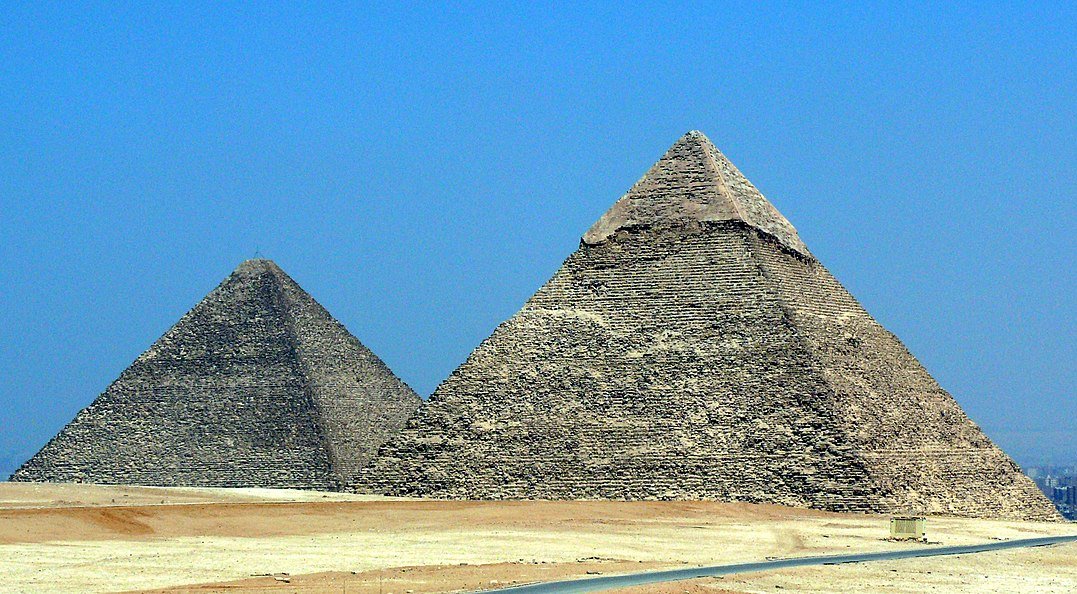 Ad Meskens, CC BY-SA 3.0, Wikimedia Commons
Ad Meskens, CC BY-SA 3.0, Wikimedia Commons
Khufu's Name Is Written In A Hidden Chamber
Deep inside and above the King's Chamber, is the cartouche of Khufu. It's painted in red ochre by the original builders. This is the Great Pyramid's sole internal clue about who commissioned it. No gold or statue was ever found, though.
A Worker's Town Was Discovered Next Door
Right beside the Giza complex, archaeologists uncovered a full-blown workers' village complete with bakeries, beer vats, sleeping quarters, and cemeteries. These weren't slaves chained to stones. They were skilled laborers with delicious meals and surprisingly good medical care.
 Visiting The So Called "Pyramid Builders Village" On The Giza Plateau In Egypt by Brien Foerster
Visiting The So Called "Pyramid Builders Village" On The Giza Plateau In Egypt by Brien Foerster
The Pyramid Was Built Without The Use Of The Wheel
One of the wildest facts is that the wheel wasn't even used in construction. It hadn't made its Egyptian debut yet. Every block was dragged or levered into place without rolling tech. In the absence of cars and wagons, these builders depended on raw muscle and genius problem-solving.
It Took Around 20 Years To Complete The Great Pyramid
According to both ancient sources and modern estimates, the Great Pyramid took about two decades to complete. That's a fast build, considering the scale, especially without cranes or power tools. Many compare it to finishing the Empire State Building with nothing but chisels and teamwork.
Ventilation Shafts Were Carved Into The Chamber Walls
Before modern air vents, Egyptians carved narrow shafts from the King's Chamber all the way to the outside, while the ones in the Queen’s Chamber were blocked. Some believe they're symbolic, aimed at the stars. Others think they're functional for airflow. Either way, they're millennia-old ductwork.
Khufu's Solar Boat Was Buried Beside The Pyramid
In 1954, archaeologists unearthed a full-sized wooden boat buried next to the pyramid, over 140 feet long and made of cedar. It was designed to carry Khufu into the afterlife. The thing was so well preserved and was later reassembled like a giant jigsaw puzzle.
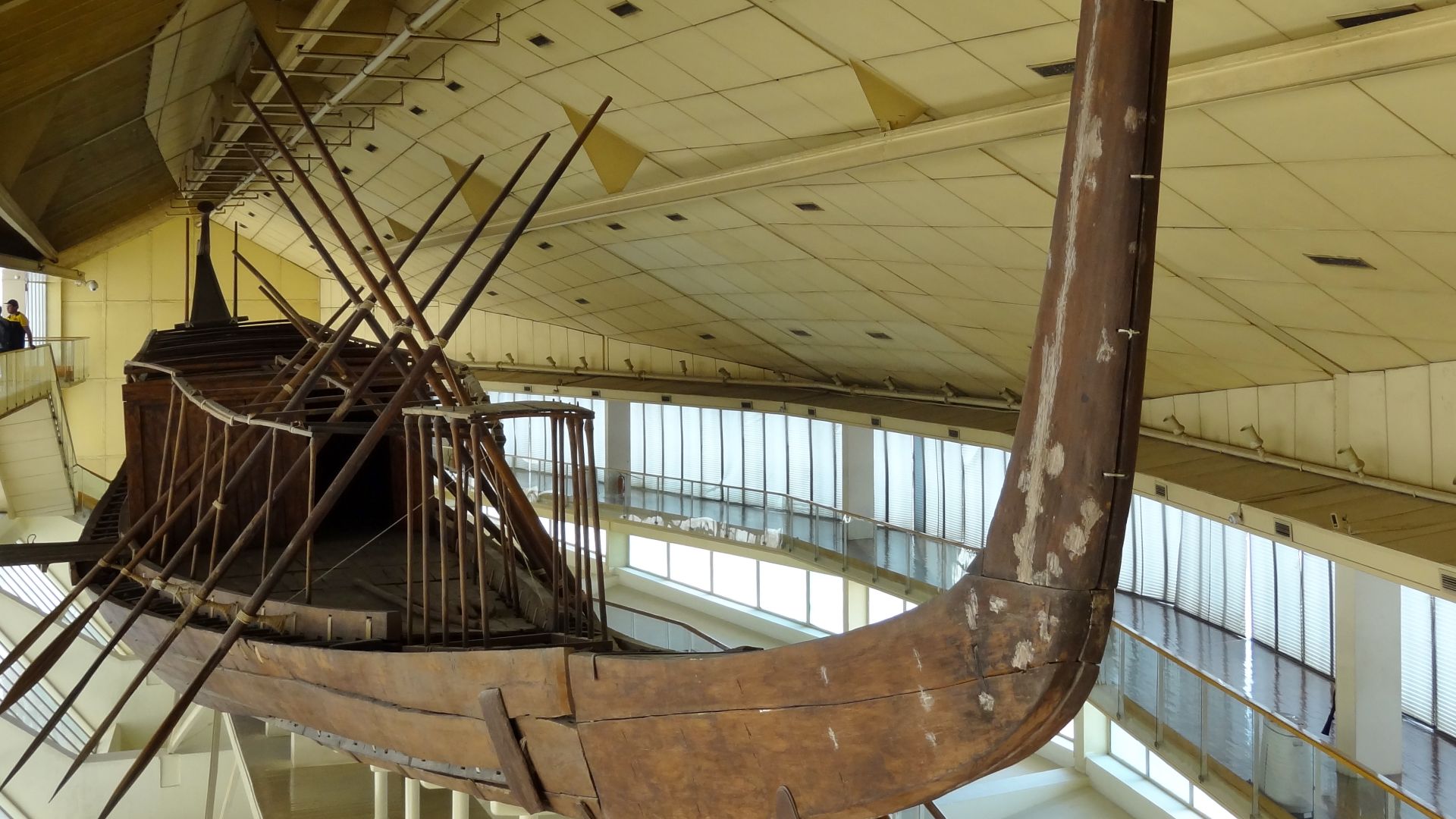 Olaf Tausch, Wikimedia Commons
Olaf Tausch, Wikimedia Commons
The Pyramid Aligns With The Cardinal Directions Almost Perfectly
North, south, east, west—each side of the Great Pyramid is astonishingly aligned to these directions with a tiny margin of error. With about 0.06 degrees, it’s so accurate that some think aliens did it. But it’s just an outstanding understanding of the sky.
The Pyramid's Height-To-Base Ratio Reflects The Value Of Pi
Divide the perimeter of the Great Pyramid by twice its height, and you get a number surprisingly close to pi—3.14. No one knows for sure if it was intentional. Nevertheless, the math is baked in with a 4,500-year-old riddle carved into millions of tons of limestone.
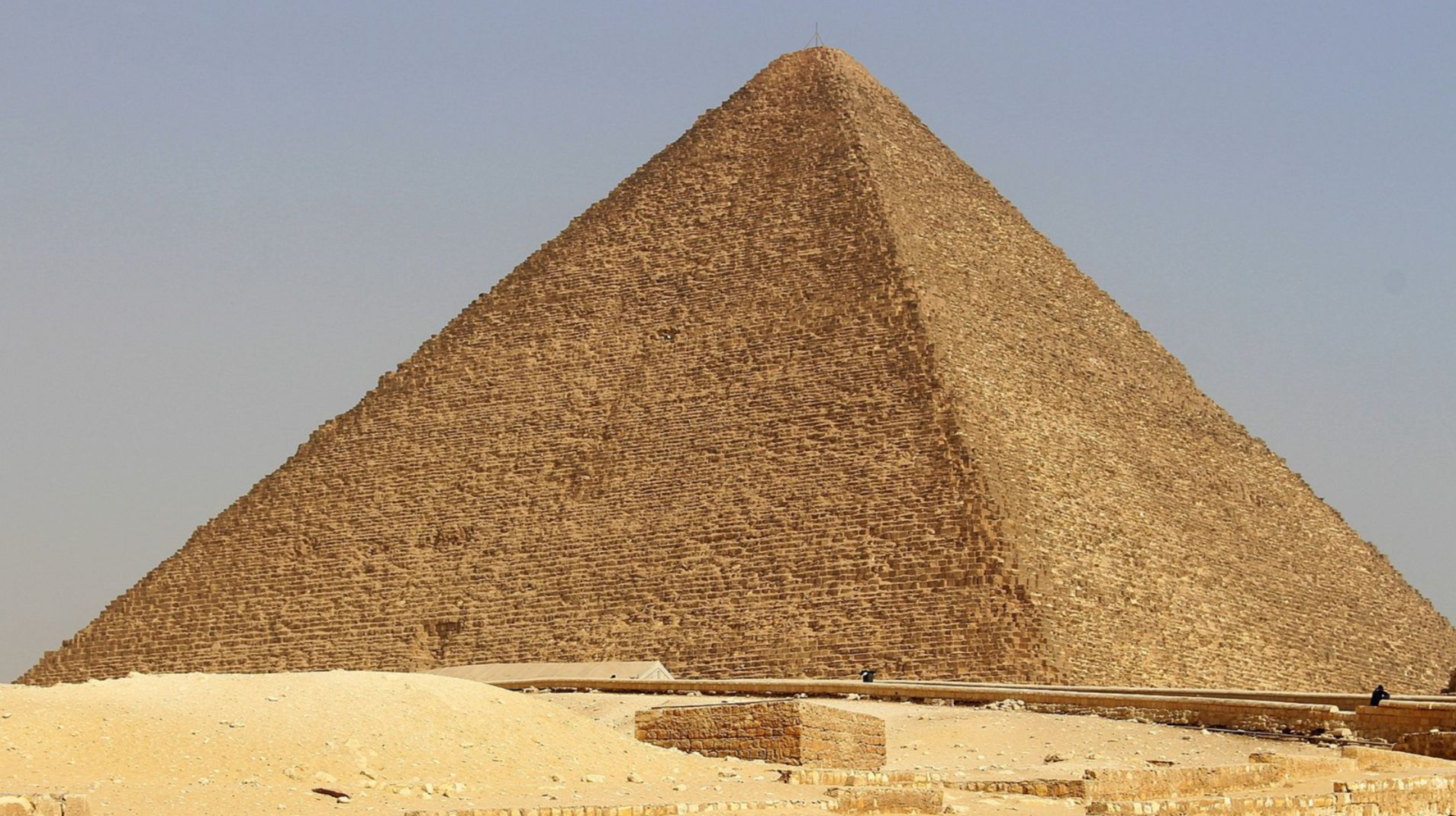 Emoke Denes, Wikimedia Commons
Emoke Denes, Wikimedia Commons
The Giza Plateau May Have Been Leveled Using Water
Some scholars believe ancient builders flooded the plateau to create a massive water level, then drained it to reveal a perfectly flat surface. This is nature's laser level with no batteries needed. If true, it would be one of the smartest construction tricks ever pulled off.
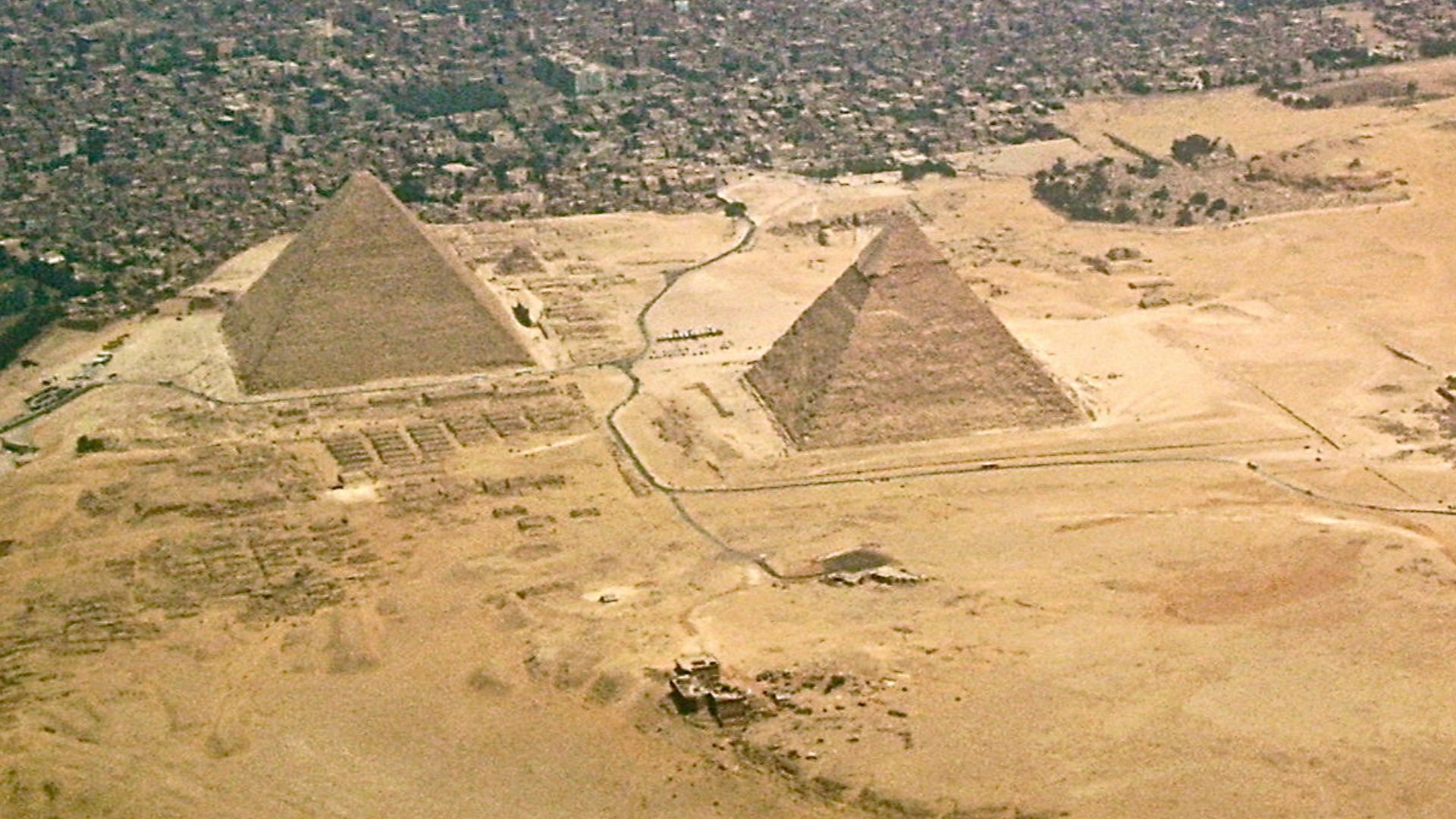 Robster1983 at English Wikipedia, Wikimedia Commons
Robster1983 at English Wikipedia, Wikimedia Commons
Modern Scans Discovered A Hidden Corridor Behind The Entrance
In 2023, a camera probe showed a 30-foot hidden corridor near the original entrance. Scientists don't know where it leads or if it leads anywhere at all. For now, it's another unsolved riddle in the world's most mysterious building.
It Has Survived Massive Challenges
Cairo's had its fair share of quakes over the centuries, but the Great Pyramid hasn't crumbled. Its design absorbs shock, especially thanks to its heavy, layered construction and massive base. Several armies also tried to destroy the structure, but they all failed.
Its Ancient Ramp System Remains One Of History's Biggest Mysteries
People wonder how Ancient Egyptians moved those giant blocks. The short answer: ramps. The long answer? No one knows exactly how. Many theories exist, and each one has some support, but there is no slam dunk. This is still one of the pyramid's juiciest mysteries.
 PBS, NOVA, Decoding the Great Pyramid (2019)
PBS, NOVA, Decoding the Great Pyramid (2019)
A French Architect Believes An Internal Ramp Was Used
Jean-Pierre Houdin's internal ramp theory is a hot favorite among pyramid buffs. He believes a spiral ramp was built inside the structure to hoist blocks upward, hidden from view. It solves a lot of logistical puzzles, and the 3D simulations show that it could be Ancient Egypt's biggest architectural plot twist.
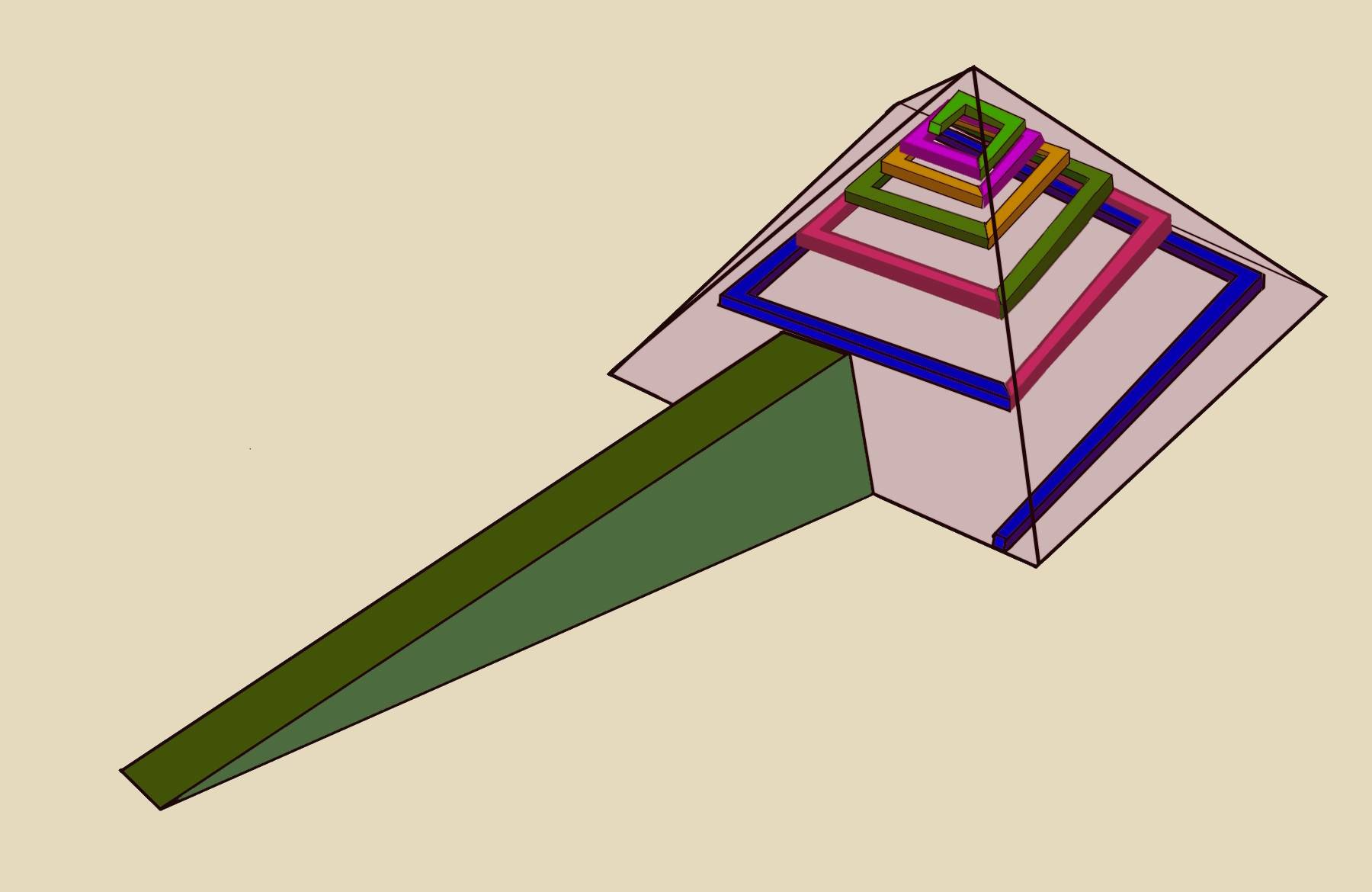 Rudolf.volz, CC BY-SA 4.0, Wikimedia Commons
Rudolf.volz, CC BY-SA 4.0, Wikimedia Commons
There's No Hieroglyphic Record Explaining How It Was Built
Despite all the writing Ancient Egyptians left behind on tombs and scrolls, there's no step-by-step manual for building the Great Pyramid. They purposely left us guessing. Whether the plans were lost or kept secret, the result is a mysterious monument.
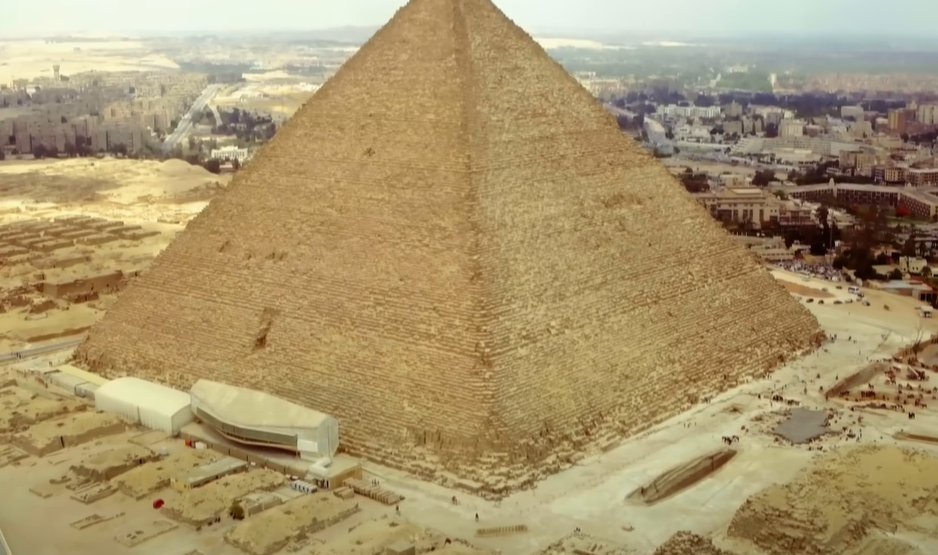 PBS, NOVA, Decoding the Great Pyramid (2019)
PBS, NOVA, Decoding the Great Pyramid (2019)
The Pyramid May Have Functioned As A Giant Sundial
Some researchers believe the Great Pyramid doubled as a sundial, with its shadow movements tracking time and seasons. It might've told more than just stories; it told time. Since the edges and corners align with cardinal directions almost perfectly, the pyramid’s shadow moved predictably throughout the day.
Looters Stripped The Casing Stones During The Middle Ages
The pyramid's smooth white casing stones were pried off centuries ago, especially after an earthquake loosened them. Locals reused the stones in Cairo's mosques and homes. So, if you're wandering through old Cairo and spot some fancy limestone, you might be looking at a piece of the original Wonder.
Some Blocks Contain Fossils From Ancient Sea Life
The limestone used in the pyramid was formed millions of years ago under seas. That means some stones have actual fossilized shells and marine life baked right in. Research shows that some of these fossils are still intact.
Napoleon Allegedly Calculated The Pyramid Could Protect All Of France
Legend has it Napoleon Bonaparte once said the stones of the Great Pyramid could build a 10-foot wall around all of France. While nobody's proven the math, the point stands. This structure is so massive, it practically qualifies as its own mountain range.
 Jacques-Louis David, Wikimedia Commons
Jacques-Louis David, Wikimedia Commons
Part Of A Larger Funerary Complex
The Great Pyramid isn't a solo act. It's the headliner in a vast old setup. Surrounding it are temples, smaller pyramids for queens, satellite tombs, and the famous Great Sphinx. It's a royal city of the dead, carved in stone.
 Emoke Denes, CC BY-SA 4.0, Wikimedia Commons
Emoke Denes, CC BY-SA 4.0, Wikimedia Commons
Three Mysterious Objects Were Ever Found Inside The Great Pyramid
Scientists were able to recover three strange items: a wooden beam, a diorite ball, and a copper hook. That's all archaeologists ever found inside the pyramid. Were they tools or ritual objects? We’re yet to know, but they're the only hints left inside this silent mystery box.
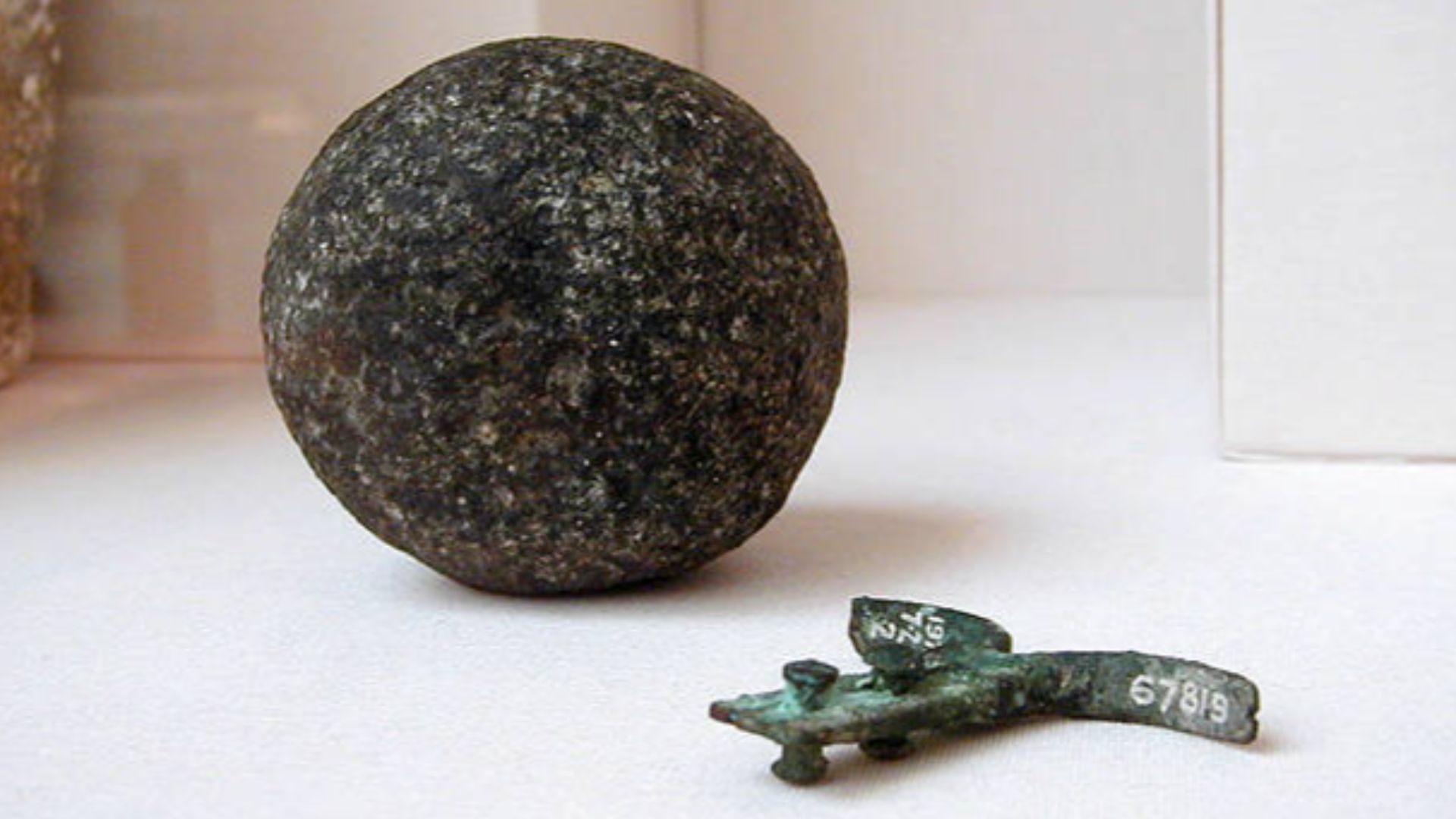 Vincent Brown, Wikimedia Commons
Vincent Brown, Wikimedia Commons

